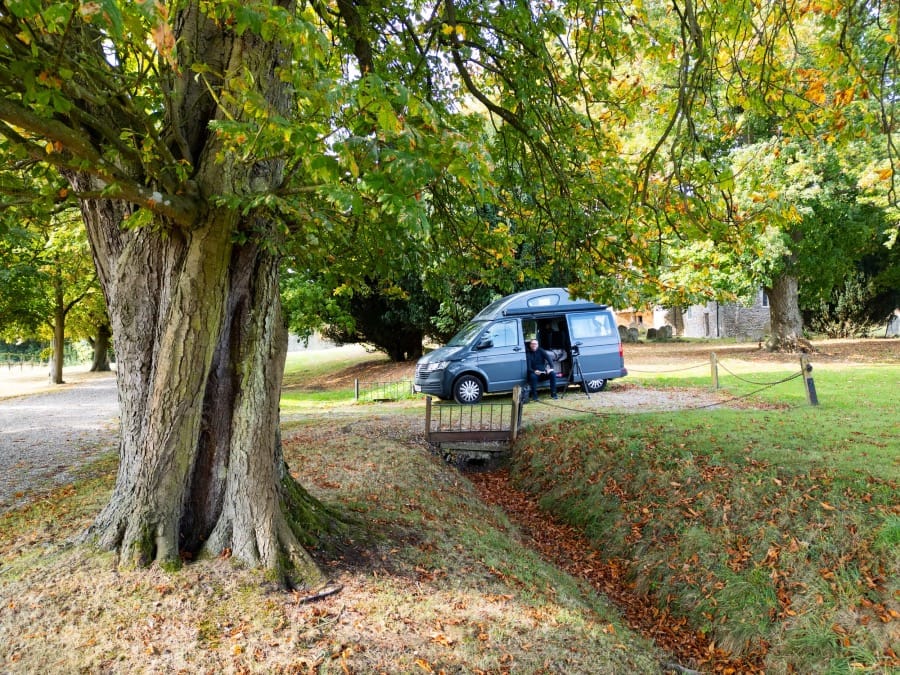
Welcome!
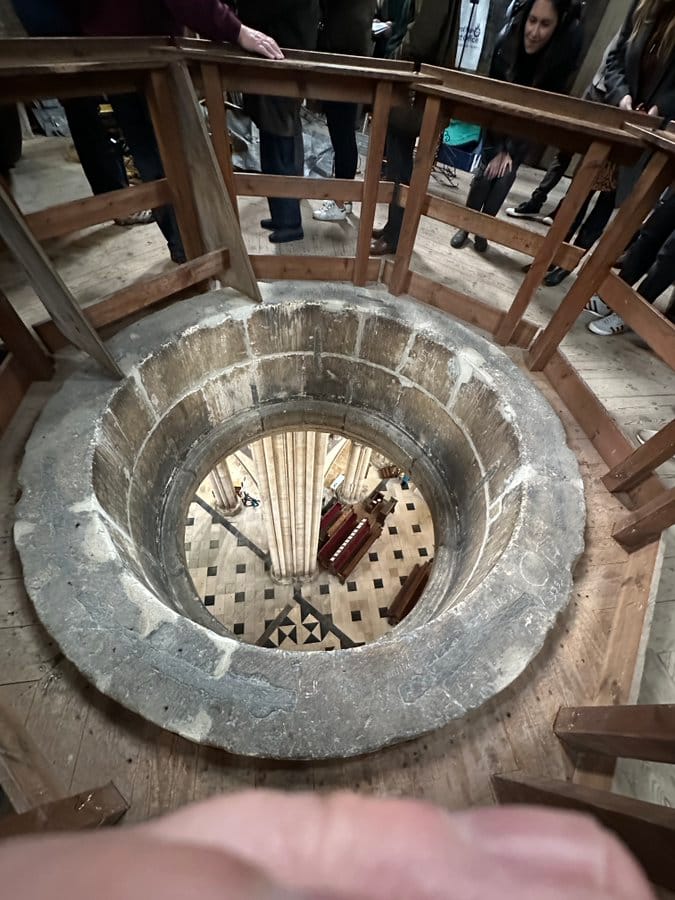
Coming Soon:
⚡️ View the latest digest and the full archive here.
📐 My Goals ℹ️ Donations Page & Status 📸 MPP Status 🛍️Shop
“A thing of beauty is a joy for ever:
Its loveliness increases; it will never
Pass into nothingness; but still will keep
A bower quiet for us, and a sleep
Full of sweet dreams, and health, and quiet breathing.”
— From “Endymion - John Keats
Pith and Pattern
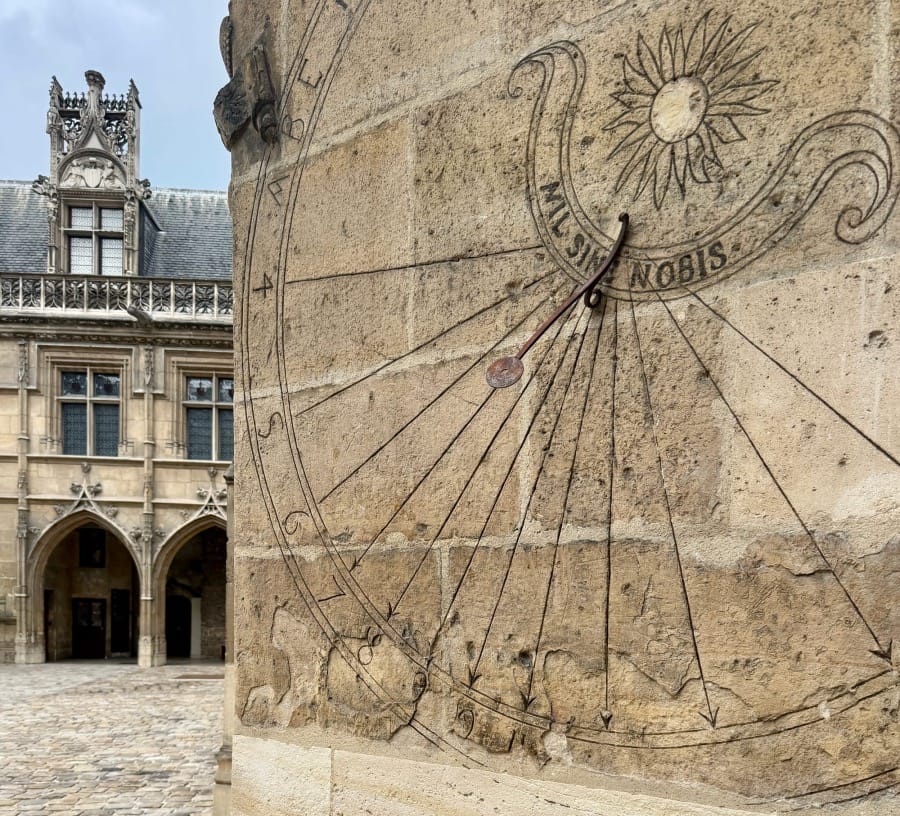
I’m in the Musée de Cluny and pondering upon whether to miss out a small side room full of ceramics in favour of moving on and completely indulging myself in a display of original stained glass from Sainte Chapelle.
‘It’s just plates in there.’ I hear somebody say, so I walk past the ceramics, but not before taking a quick glance inside the room. I see lots of pattern and decoration bursting from behind the glaze so I delay my gratification and take a detour.
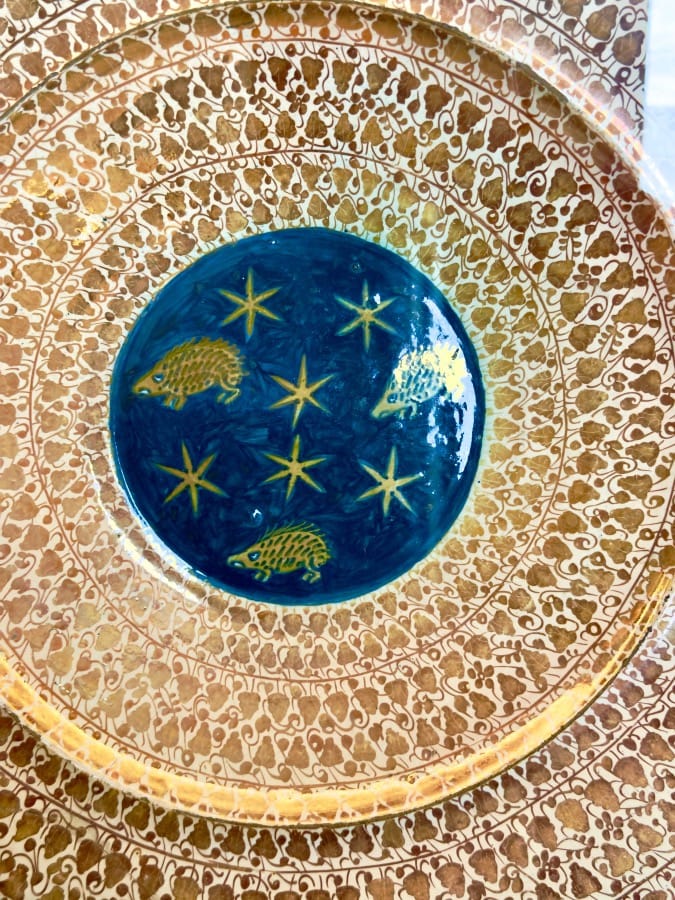
I’m so glad I did, for within the glass display is a single plate with a colour, pattern and design that impacts me greatly. I know these things can be personal - a particular pattern, on a particular medium on a particular day - but this ceramic brings tears of joy to my eyes, tears that make ‘additional wheels, spokes and rainbows’ that consecrate the ceramic in the casement before me.
The plate is medieval. A Hispano-Moresque design which radiates with oranges that are spliced, halved and quartered. Much like the Romanesque Christ in Majesty in the room behind me, it makes an imprint on the felt sense - that wordless register where meaning takes root before thought.
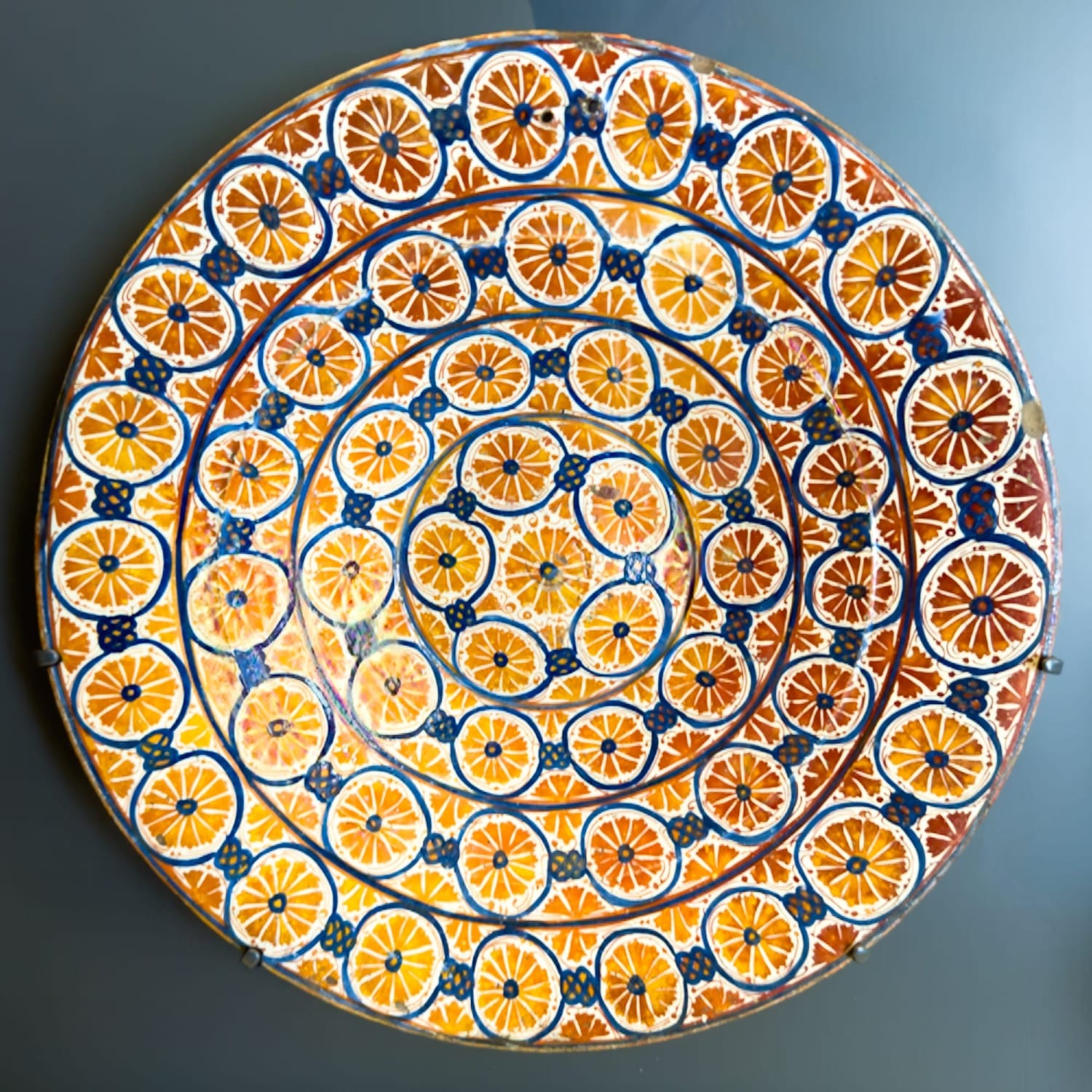
Even when I’m heading back home I can feel its zest, its warmth and light. I take the memory of it with me inside, like contraband - a moveable feast. I sometimes wonder that when I’m older and the memory is faltering if these things will still remain. Does this way of sensing proffer up a different aspect of memory - one that sits imprinted within the body? An archive beyond the reach of the faltering brain?
On the Eurostar I keep pulling up the image on my iPhone - it feels like the process is a questioning one - as though repetition might unlock its secret. What is the purpose of the design? Why does it impact me on such a profound level?
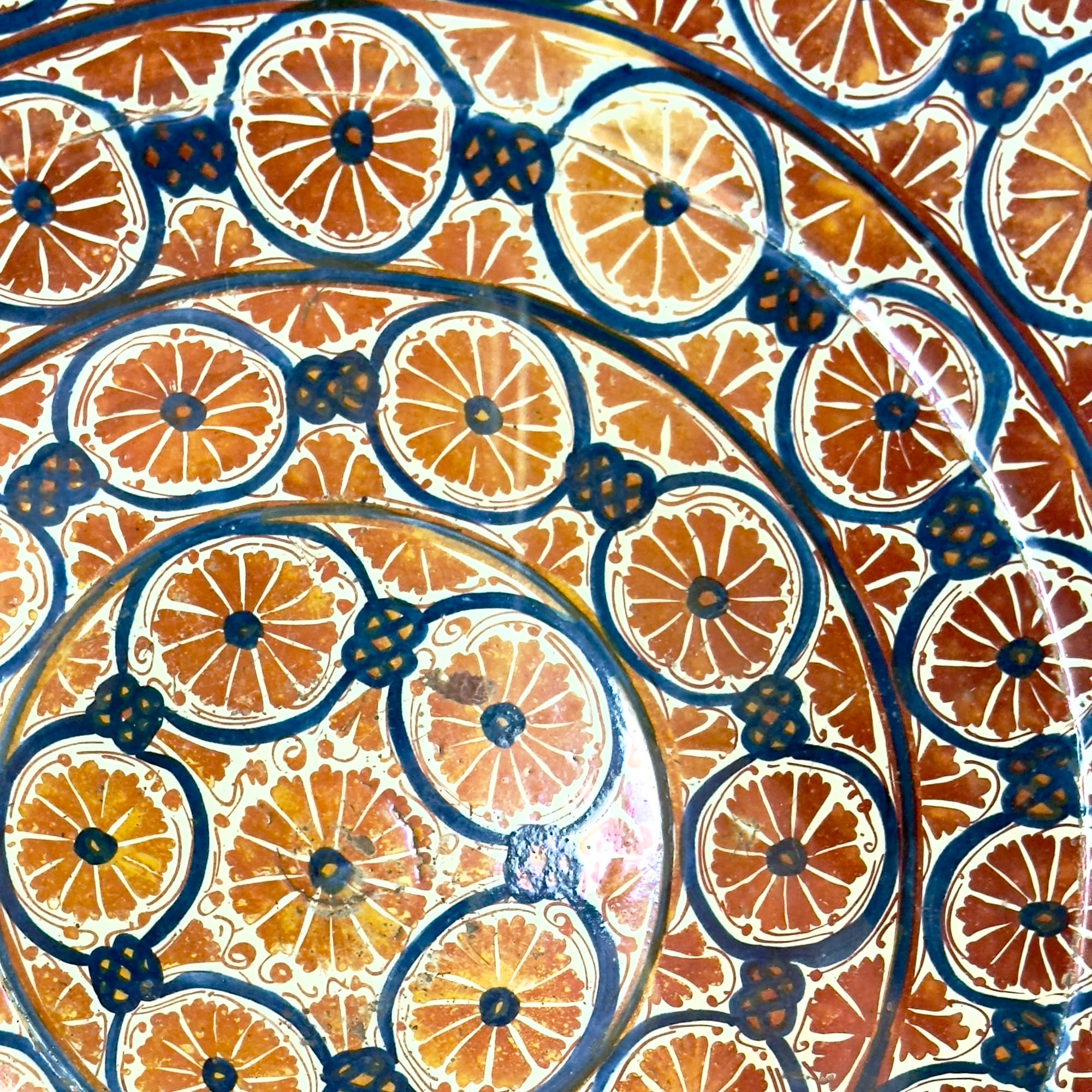
Back home, the feeling lingers. The only way forward is through observation through the hand. I rough out a sketch hoping that the lines will loosen its meaning. But my drawing falters.
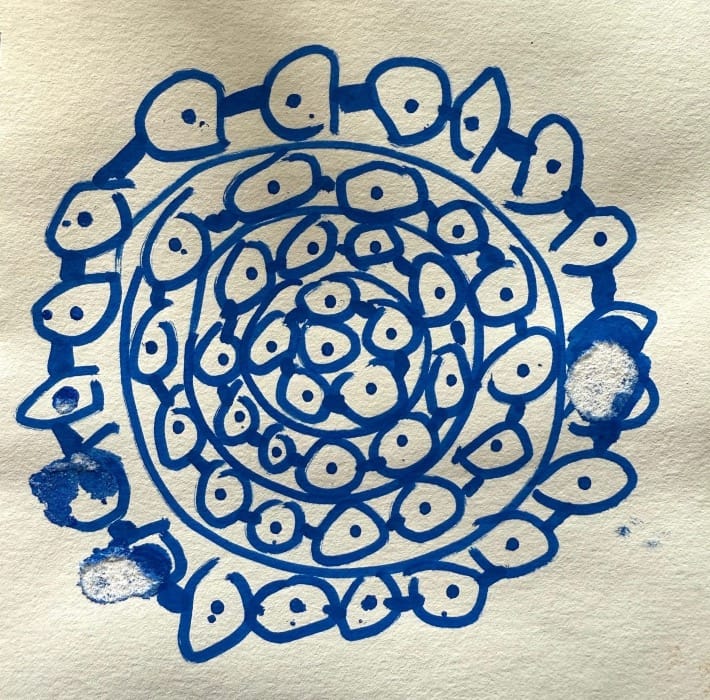
I say to myself ‘This bloody thing is shapeshifting, mesmerising.’
Still, I persist and start again from a different angle. Slowly, as the colour seeps into the paper, its pattern begins to speak.
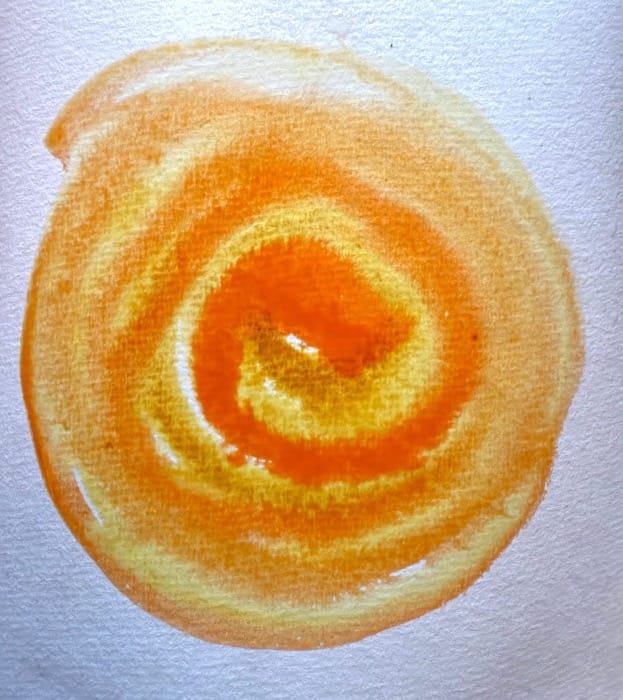
I’m struck by a multitude of things that reveal themselves incrementally as I tint in the colour: how balanced it is; the craft and intelligence behind its design - how easy it is on the eye, but how difficult it is to replicate.
It speaks too. It tells of opposites - simplicity and complexity, diverging and converging, complimentary colour and opposite colour, utility and aesthetics, finite and infinite, symmetry and asymmetry, unity and fragmentation, static and dynamic, local and global, perfect and imperfect. Juice and pith.
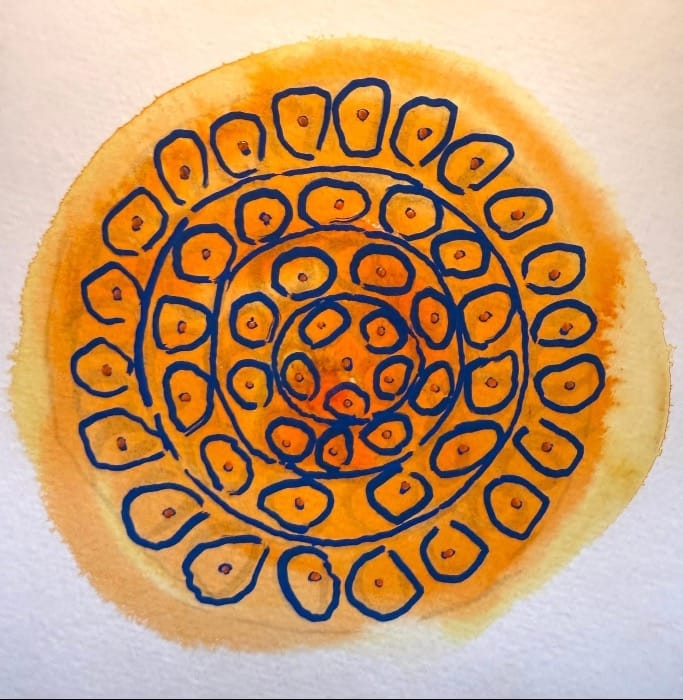
Then, one small detail arrests me: the central orange, floating free of the blue circle that binds the others. Is this the mother orange? A token of rootedness, or a hymn to abundance? Or does it whisper something greater - that the infinite hides in the particular, waiting for the eye to see?
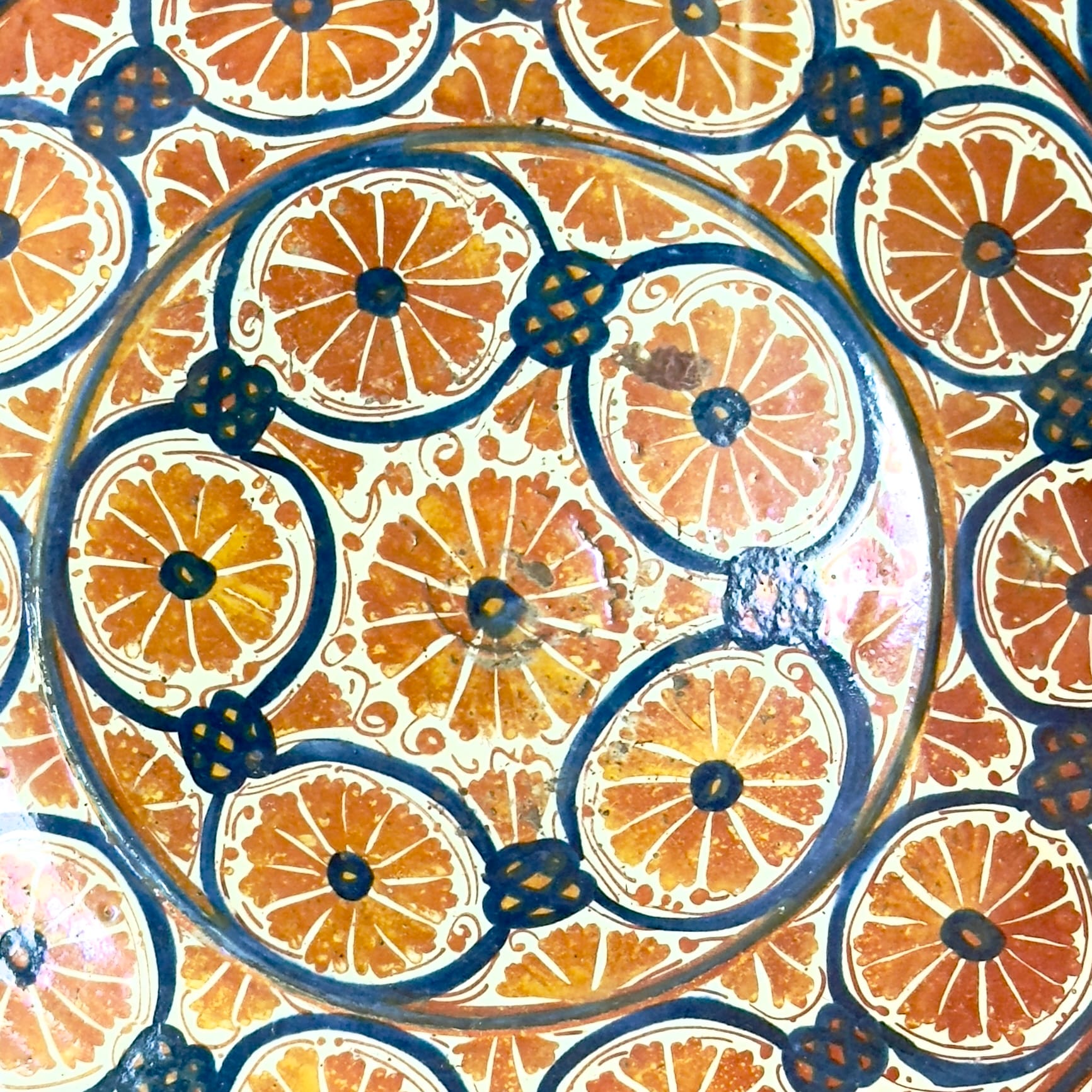
I think of Nan Shepherd when she talks of the Cairngorms - words that are just as relevant to this 14” diameter plate: “I know its depth, though not in feet.“
This pattern brushes the hem of the divine - not only because it turns the fleeting into the eternal, but because it draws us back to the zest and marrow of what it is to live fully, wholly, and human.
I ask Google about the plate and it provides me with the empirical - but nothing else. I then ask the AI in Siri - but it repeats the same facts and figures. These apps that are deemed so clever do not know how I feel here - they have no inkling of things that cannot be verbalised. I don't know why, but I feel a bit of hope in that knowledge.
As the paint brush comes to rest, my thoughts drift to the orange itself - its granular pith, its little sacks of sunlight, the copper irregularities scattered across its skin - and then to a memory of reading a book to Sam and Em when they were mites. The book, by Colin Thompson has a chapter about Ethel the Chicken. She lives in a garden, tucked inside a box stamped First Class Oranges. The other creatures call her an orange; she insists she’s a chicken. The younger creatures are warned not to talk to strange fruit.
The memory makes me smile, for this ceramic, too, resists being confined and categorised. It find’s itself stuck within a room of plates, but it is anything but. It is fruit and geometry, utility and beauty, craft and cosmology. And as I follow the thought back to the orange - its nuanced complexity, its tiny suns encased in flesh - I feel another realisation unfolding. That in the granular and the particular, through a different way of observing, we find doorways into something boundless. That Ethel, obstinate in her box for oranges, knew a truth I had overlooked: categories are only cages. The world is larger, stranger, more astonishing than the labels we pin to it. Labels crumble like brittle shells when wonder presses against them.
I finish my sketch and take it all in - it’s not a rendition of the plate but a response to how it made me feel. From the tight orbit of a 14 inch ceramic, I have travelled far: through pith and pattern, through colour and craft. And then, from the rim of a single plate to horizons without end, from a universe found in the segment of an orange to the sudden opening up of all possibilities - with the realisation that oranges are not the only fruit.
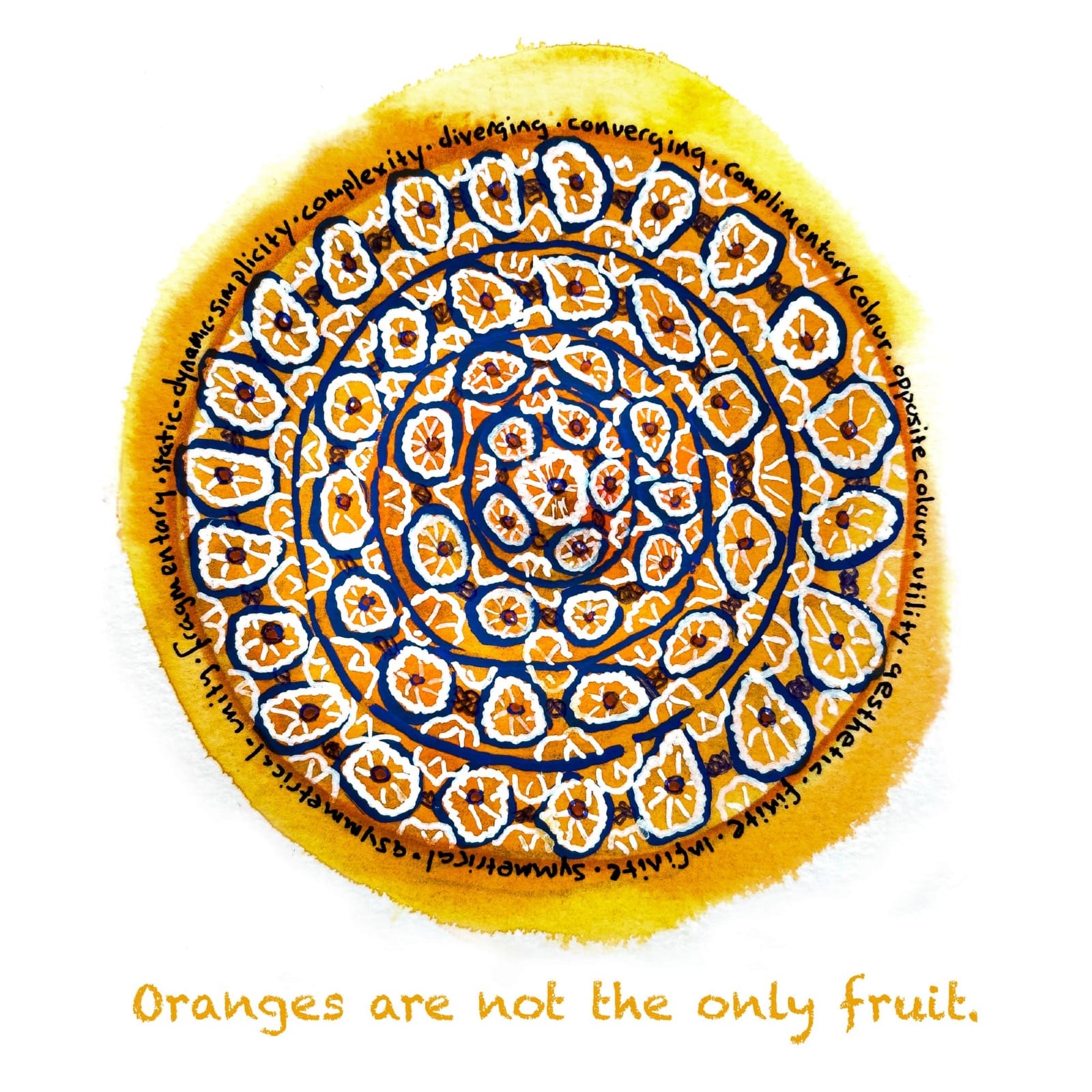
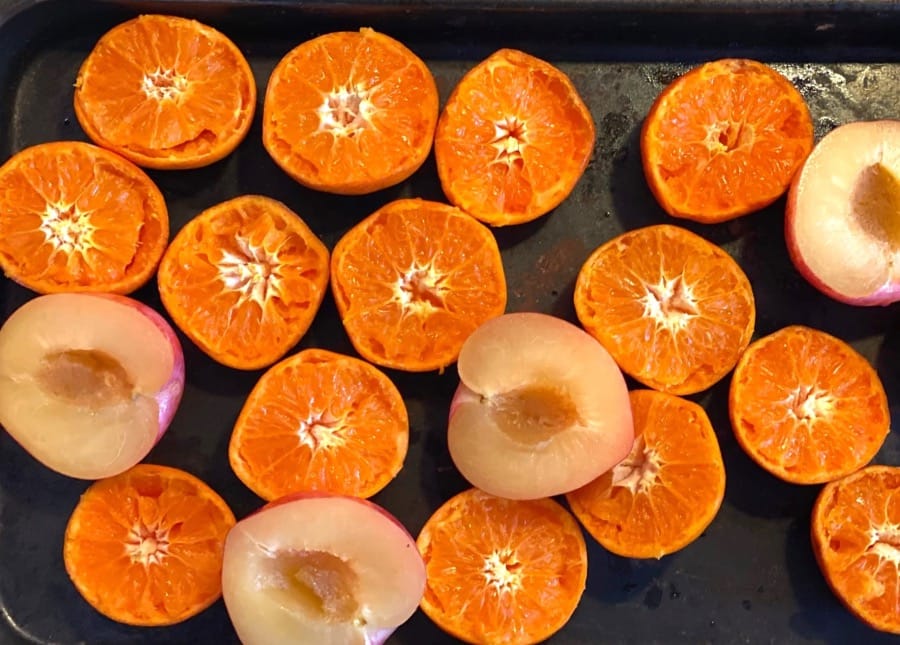
Become a Member
Join TodayParis
Paris, at its best, isn’t a thought but a sensation – something that shimmers like the aqueous glint that catches the underside of a bridge.
Musée de Cluny
The Roman and the Cluniac Buildings
If you can picture my delight at stumbling upon a plate patterned with oranges, then imagine the ecstasy – almost tipping into Stendhal syndrome – when I found myself standing deep within the bowels of an original Roman structure with its vaults soaring to 14 metres.
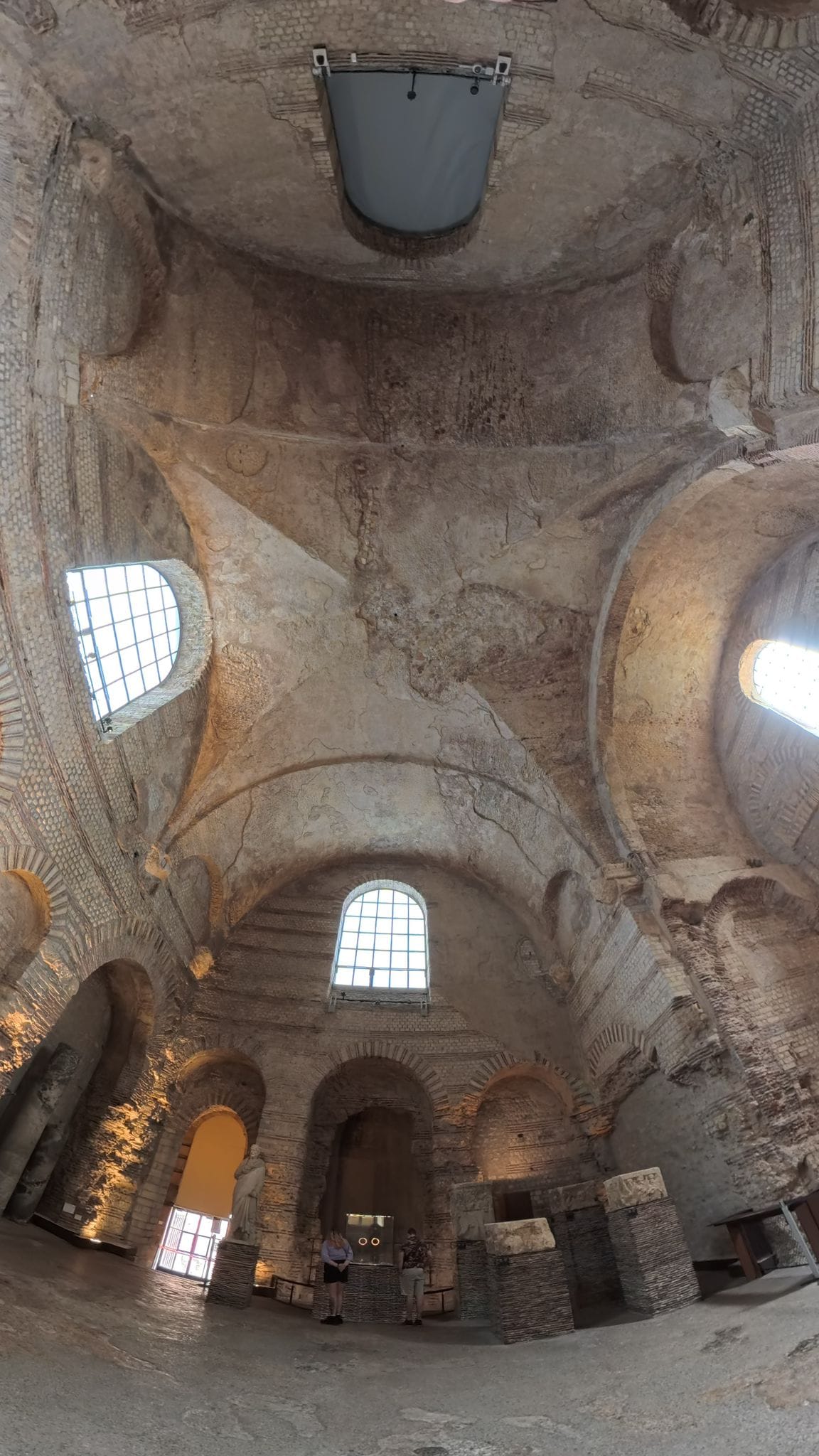
It is one of the most complete Roman buildings in Northern Europe.
The Gallo-Roman thermes of Cluny. I knew of them, but not of their immensity. And for any Romanophiles in the UK who think it a stretch to experience a full-blooded Roman building – it’s closer than you think.
The museum is made up of two buildings the Roman 3rd century bath house with 14m high vaulting and the Hôtel des Abbés de Cluny (15th‑century mansion). Built in 1485 by Abbot Jacques d’Amboise as a residence to showcase Cluny’s power.
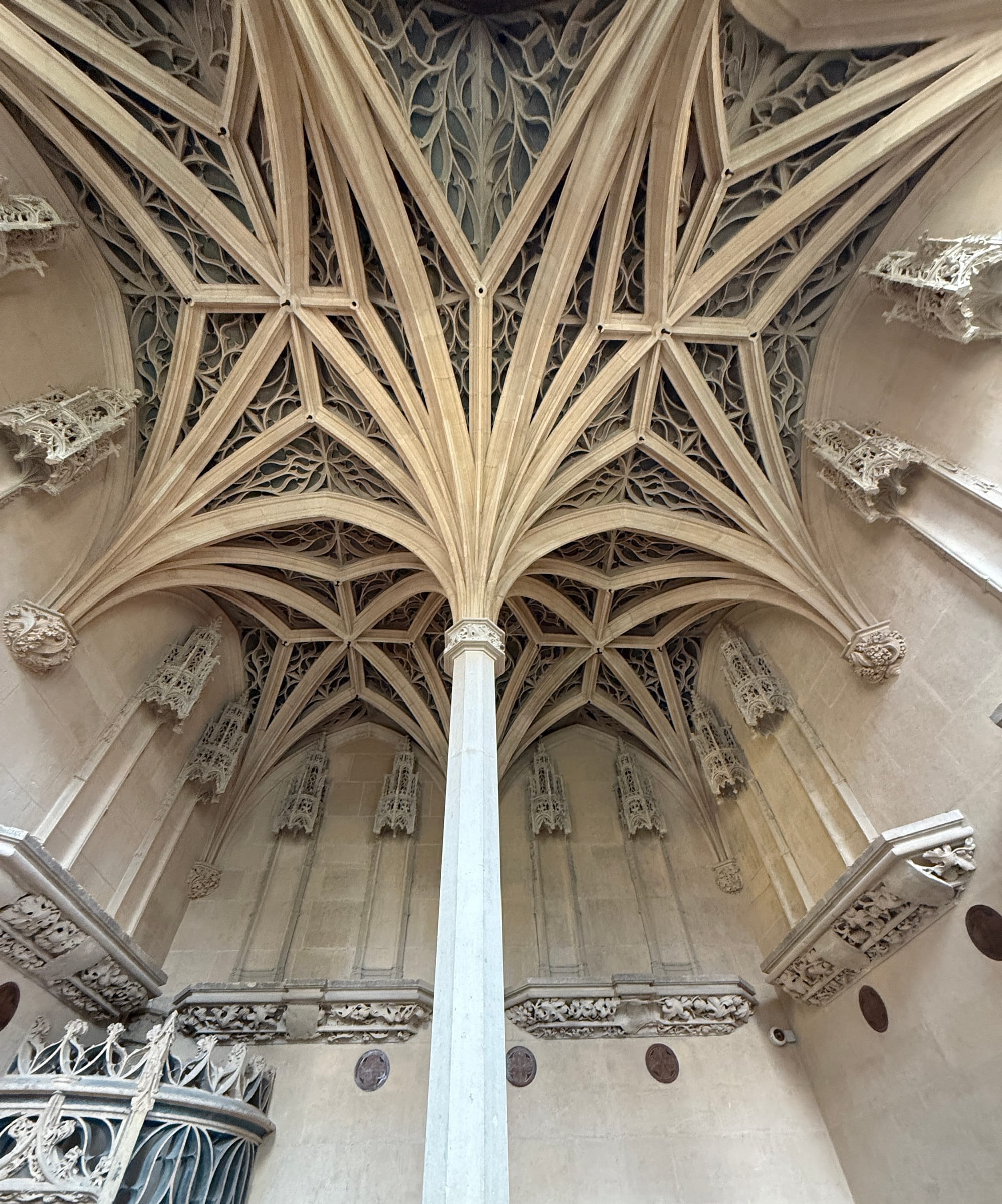
To visit Cluny is to see at first hand the sources and influences on our own post-conquest culture.
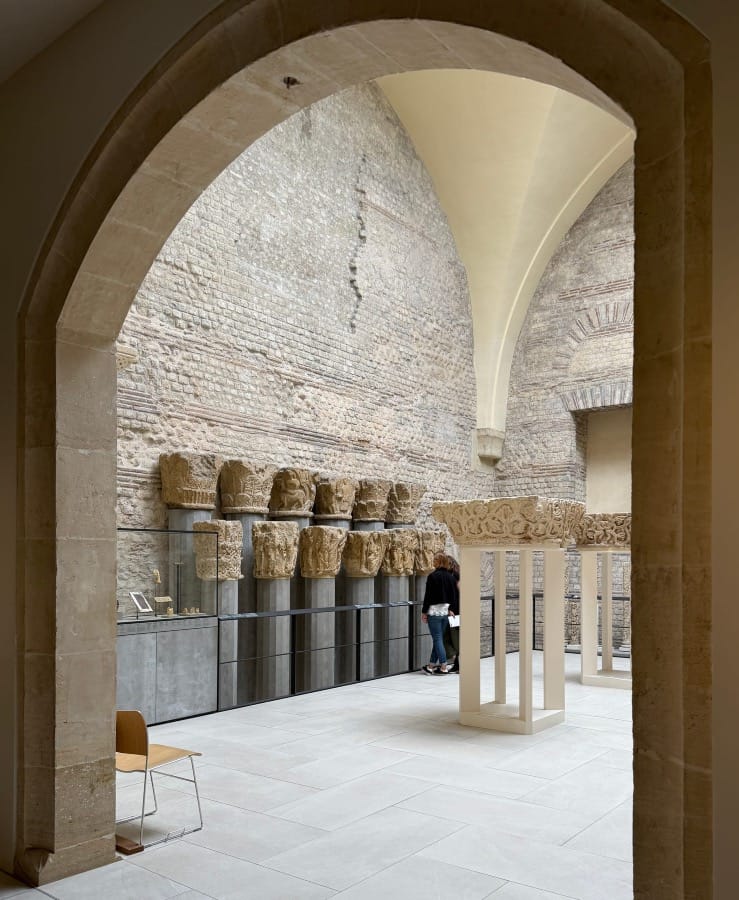
The range of artefacts and treasures on display at the Cluny is breathtaking. As I walked among the capitals, carvings and sculptures, I couldn’t help but think of places in the UK that share a similar style.
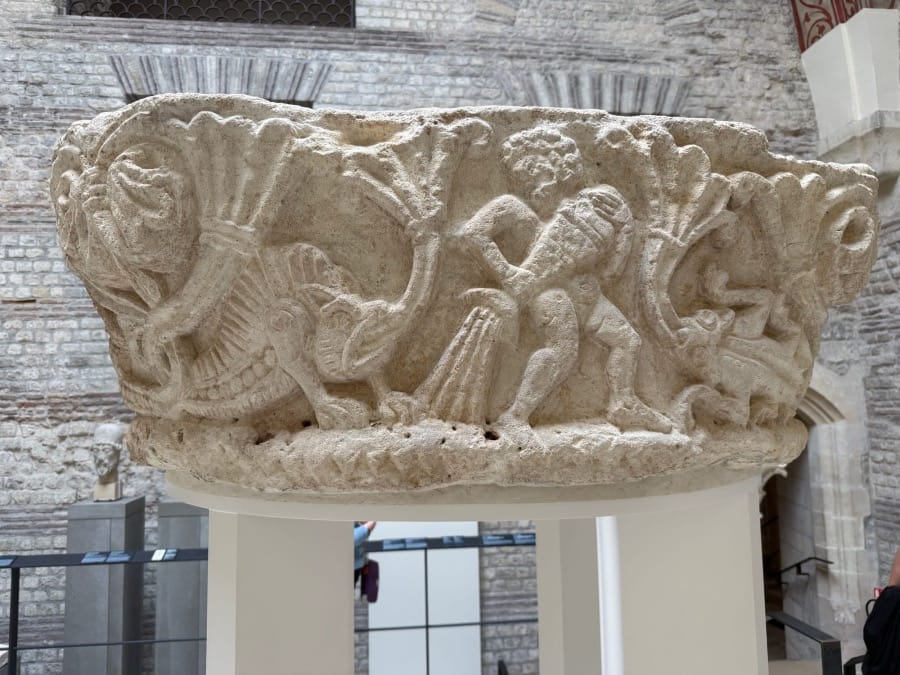
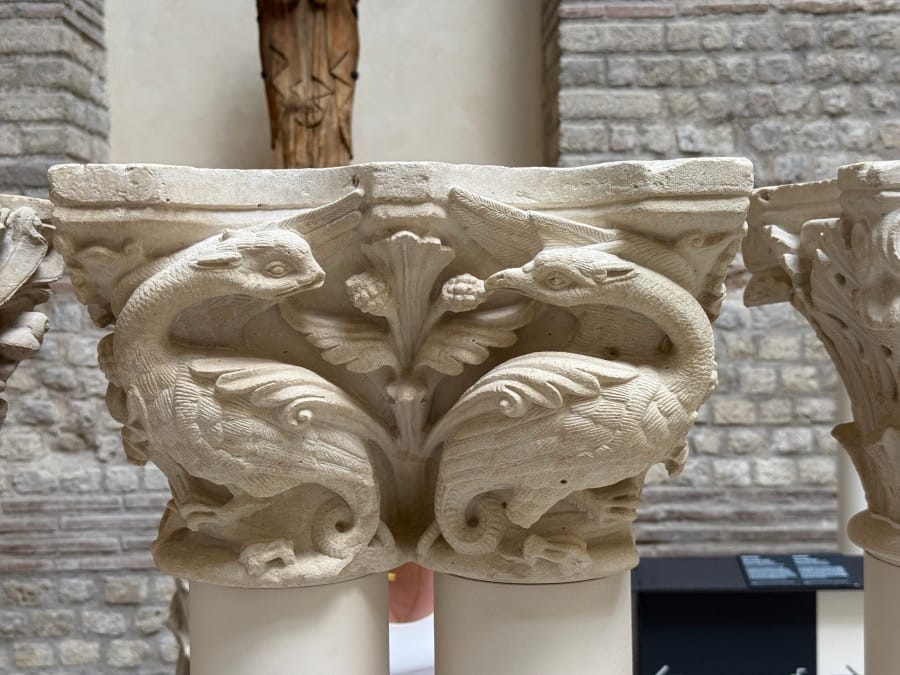
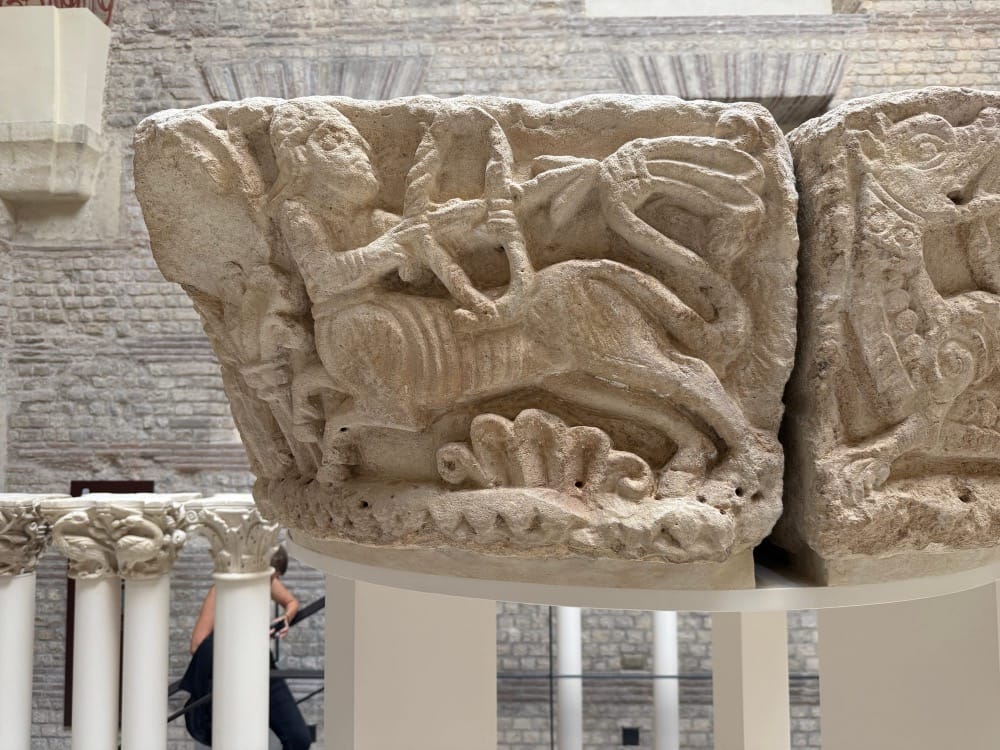
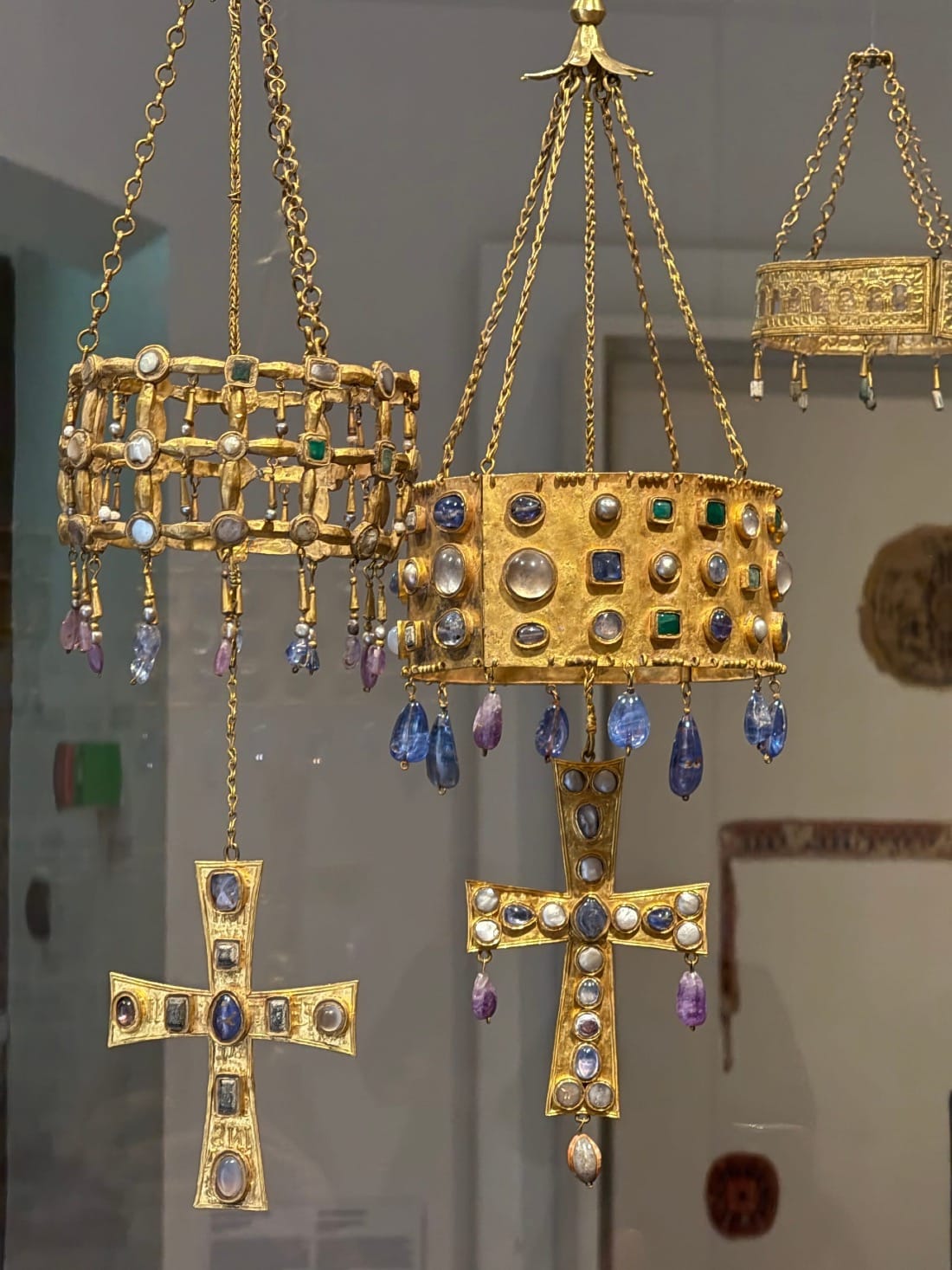
French influence on UK architectural styles
And if you have any doubt as to some of the origins of our material culture and architecture - then compare these details from Cluny with the details from Lincoln's West Front and those of Kilpeck in Herefordshire.
Cluny

Lincoln
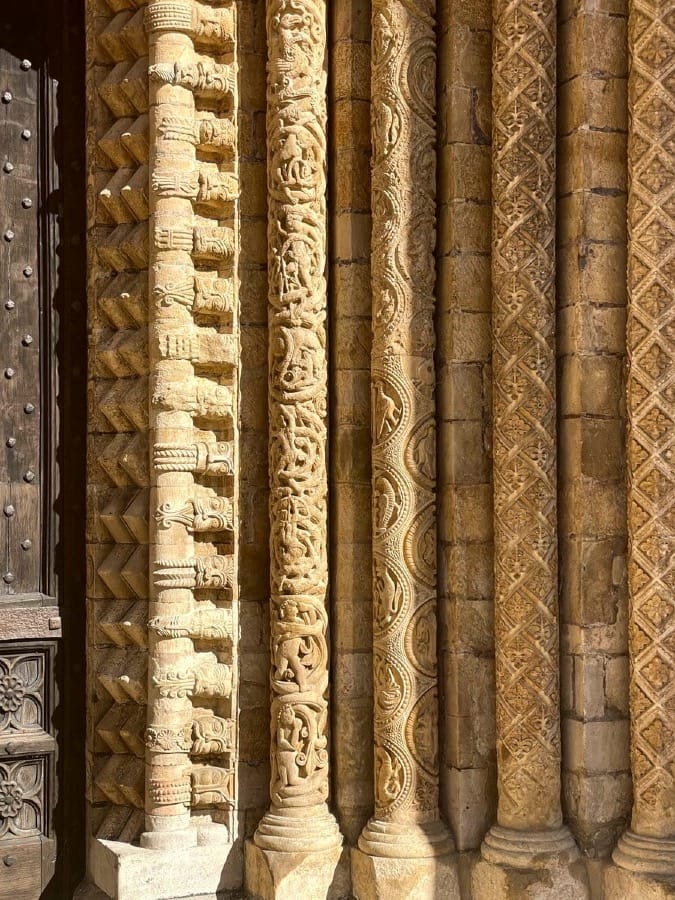
Kilpeck
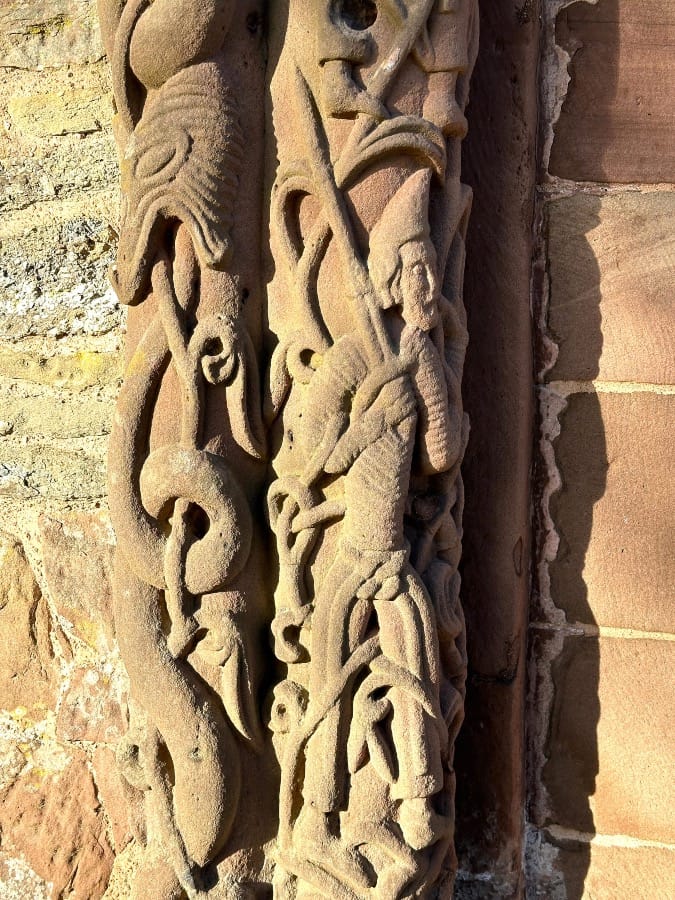
Much of the building that houses the artefacts was originally built as a townhouse for the abbots of Cluny. The Cluniac order reached England in the early 11th century under the patronage of Norman nobles. Notable Cluniac houses include Lewes Priory and Wenlock Priory among many others. Paisley Abbey in Scotland was originally a Cluniac priory.
Here's a small selection of what is on offer at Cluny.
Roman
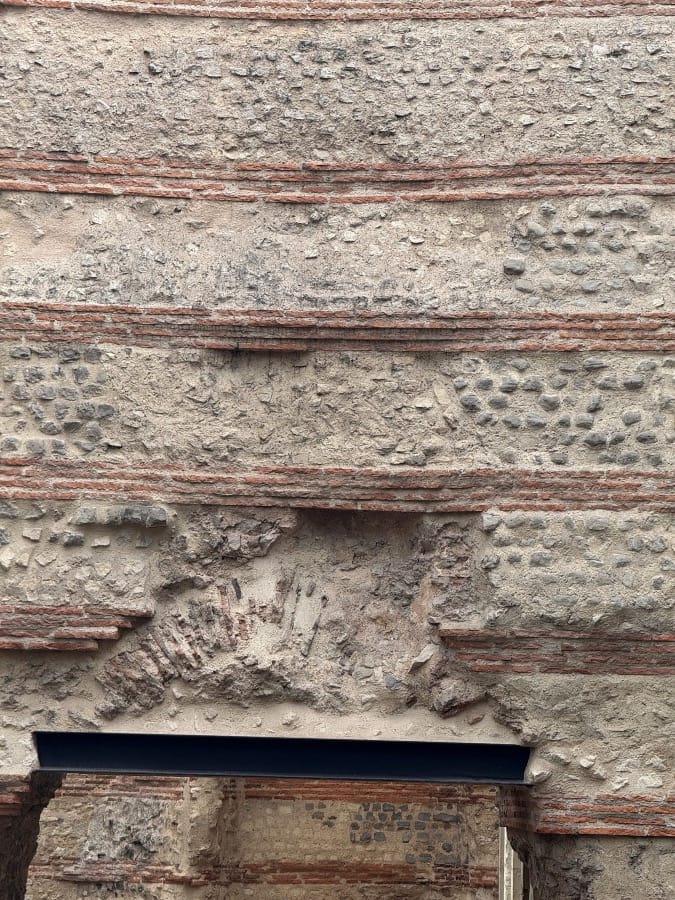
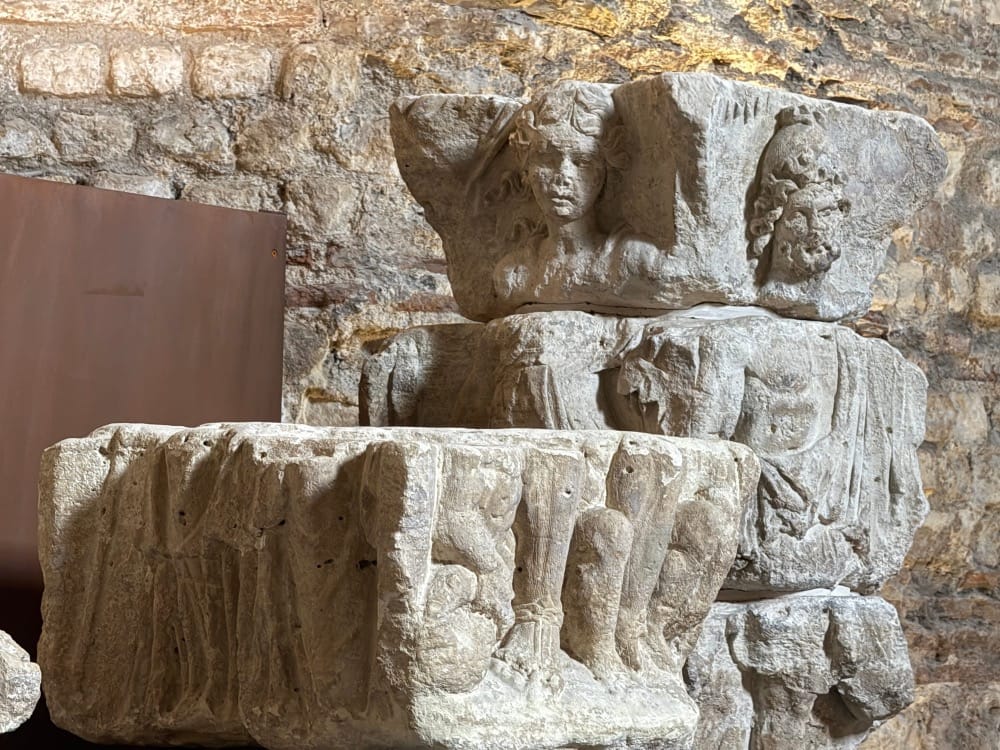
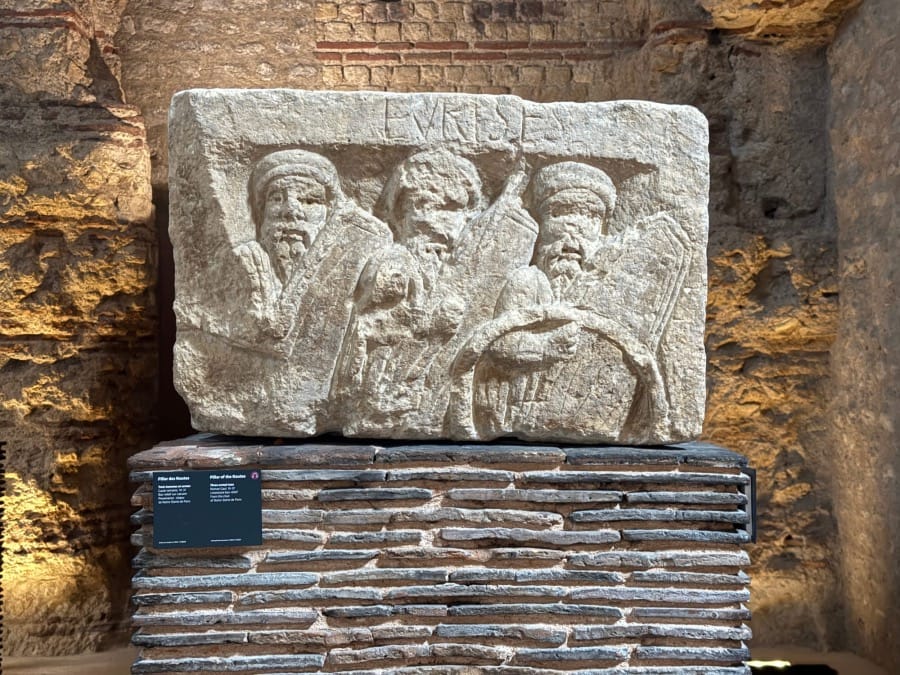
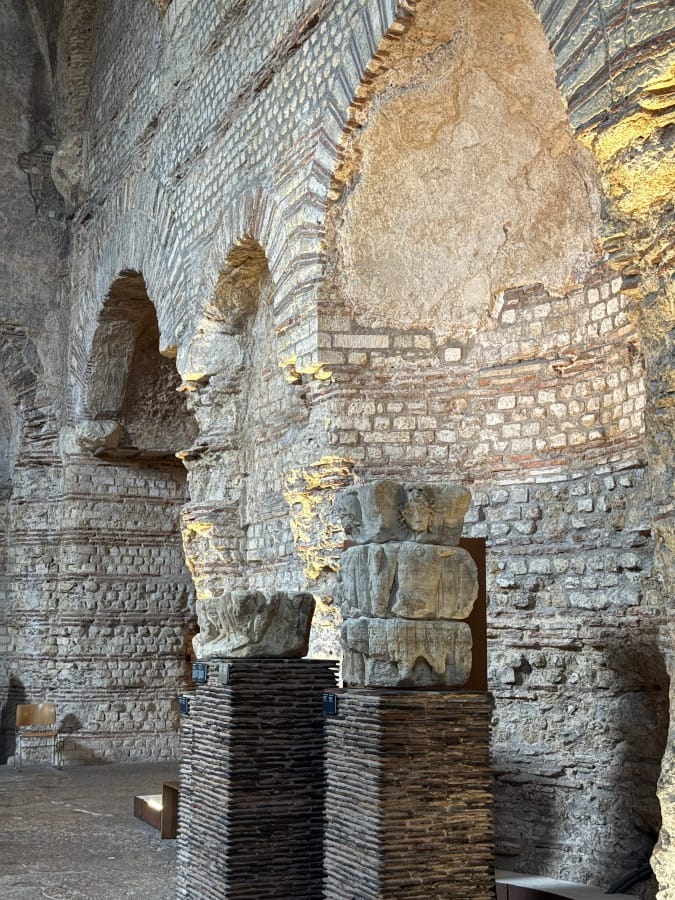
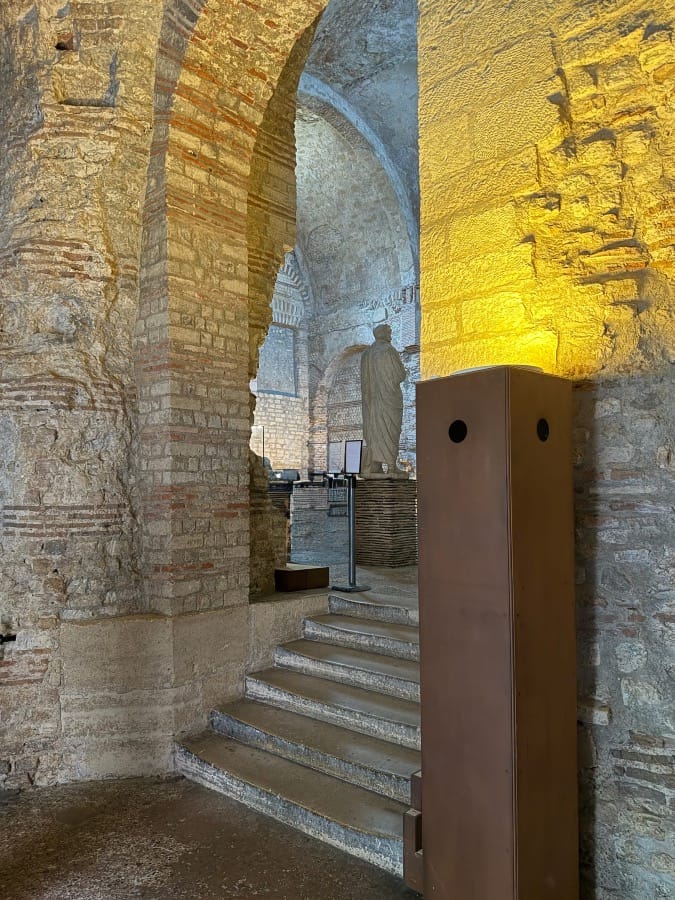
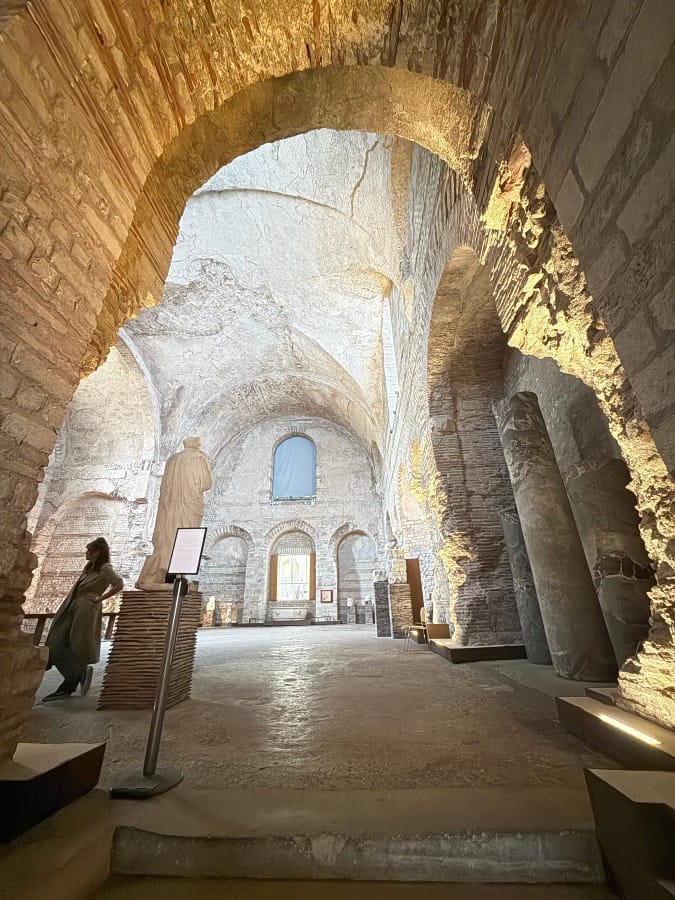
Later Medieval
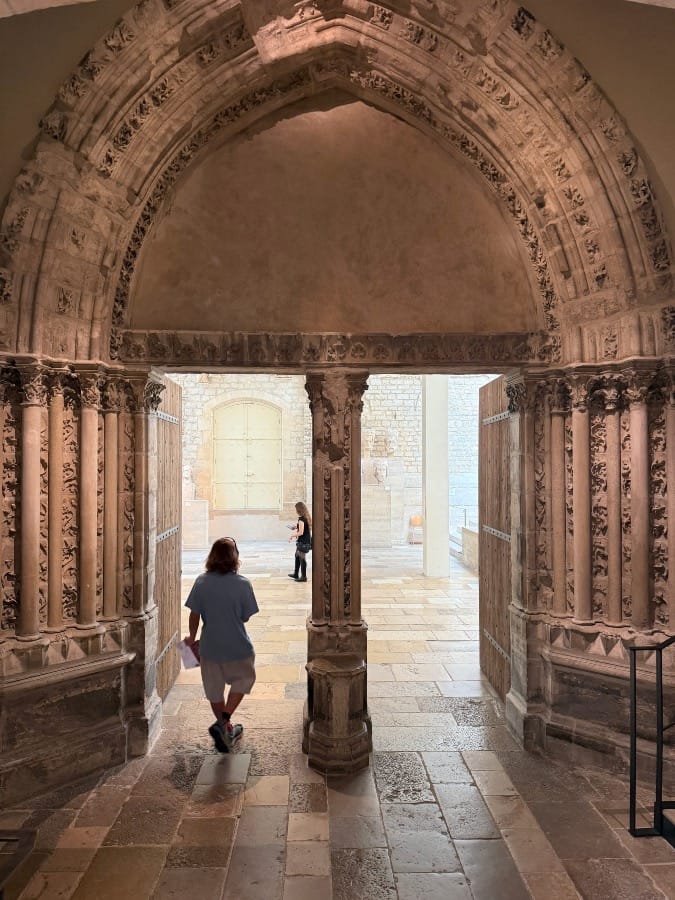
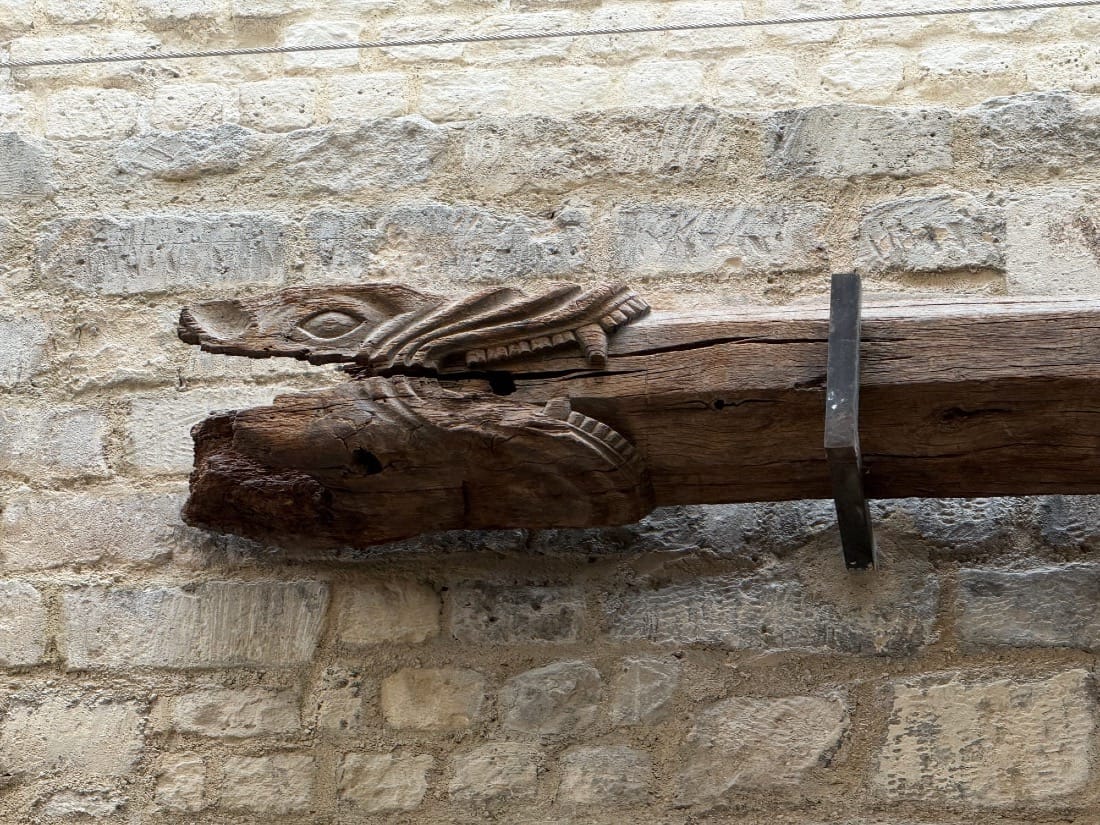
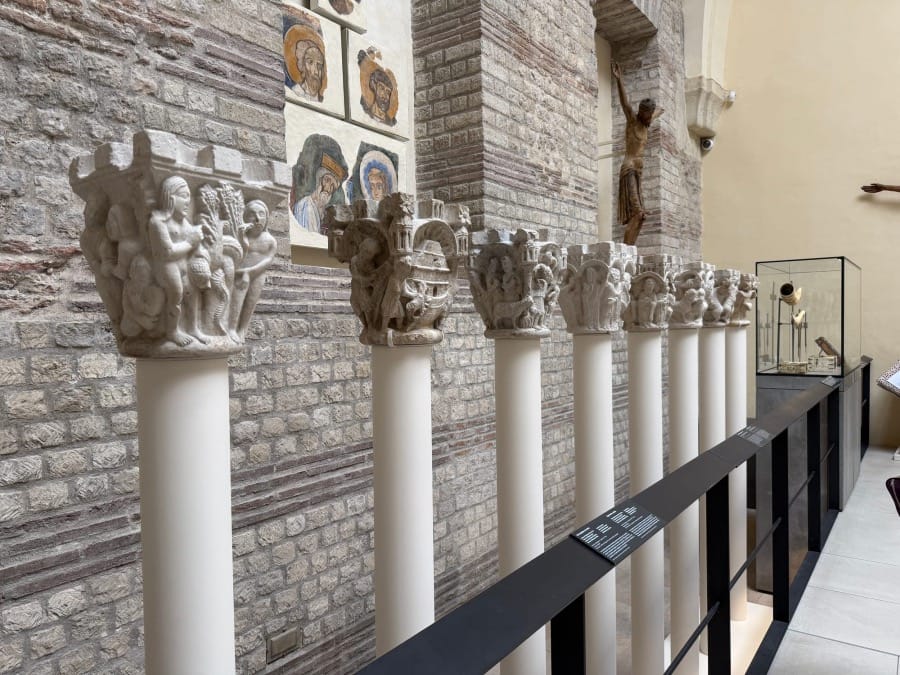
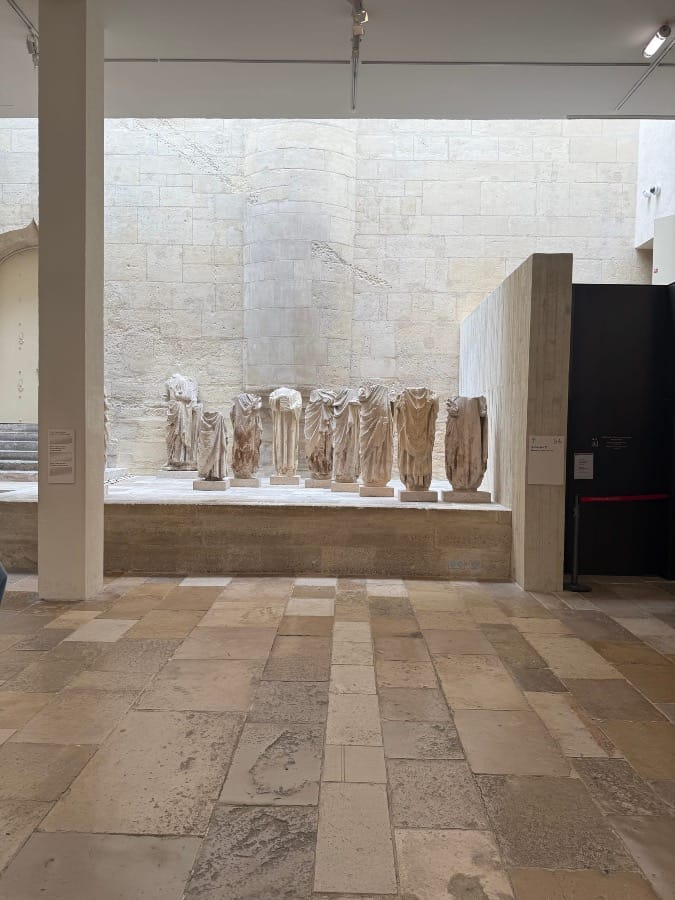
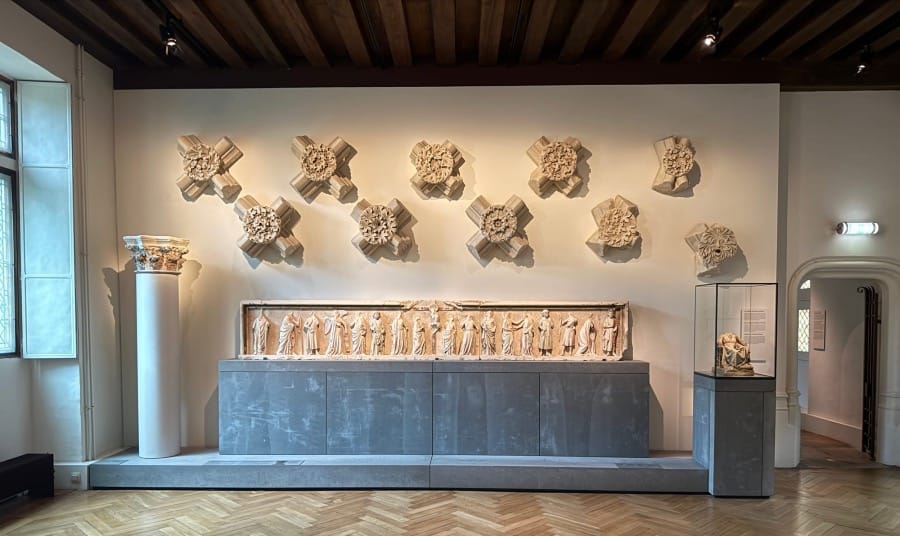
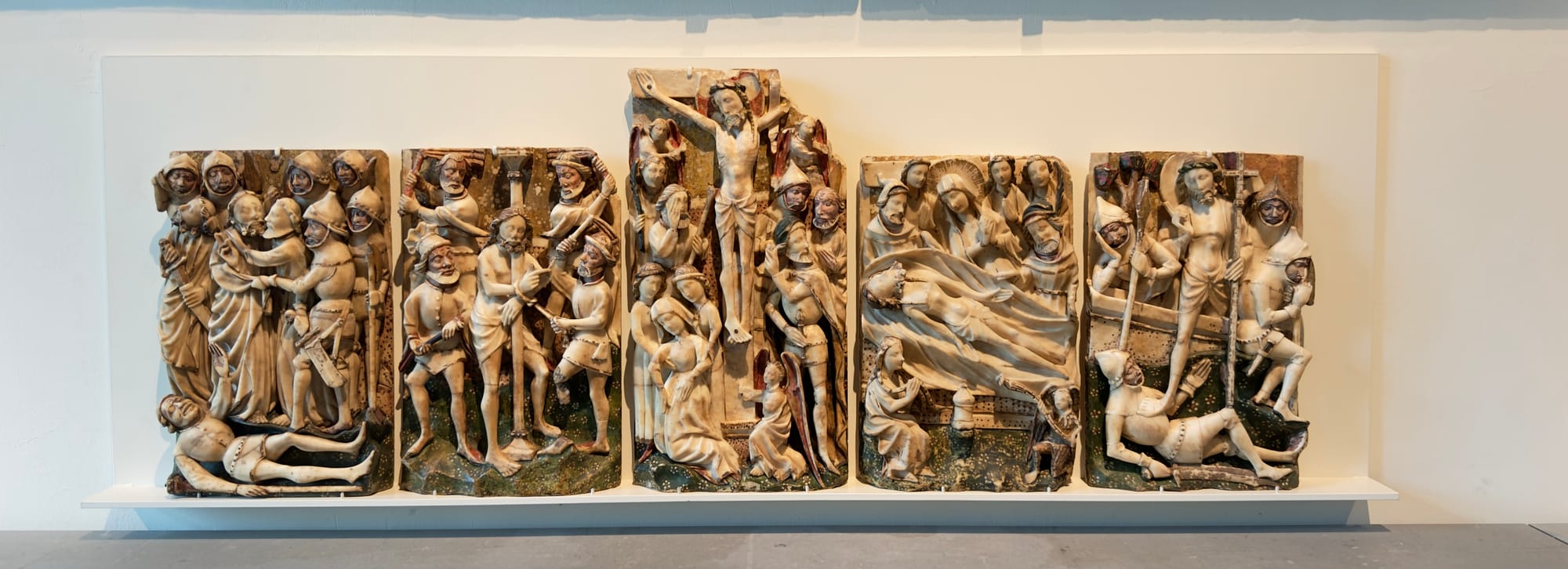
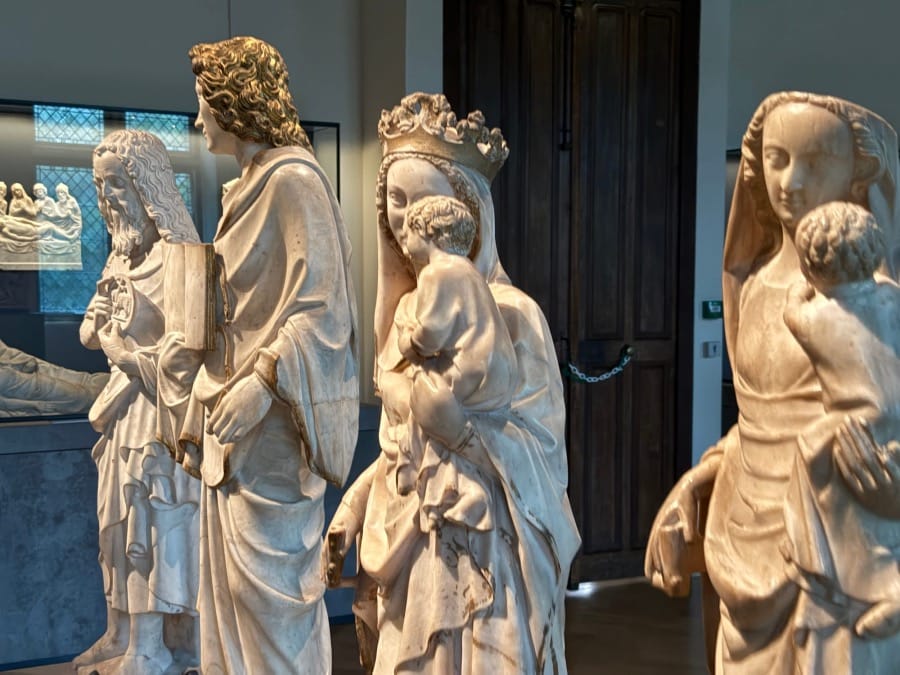
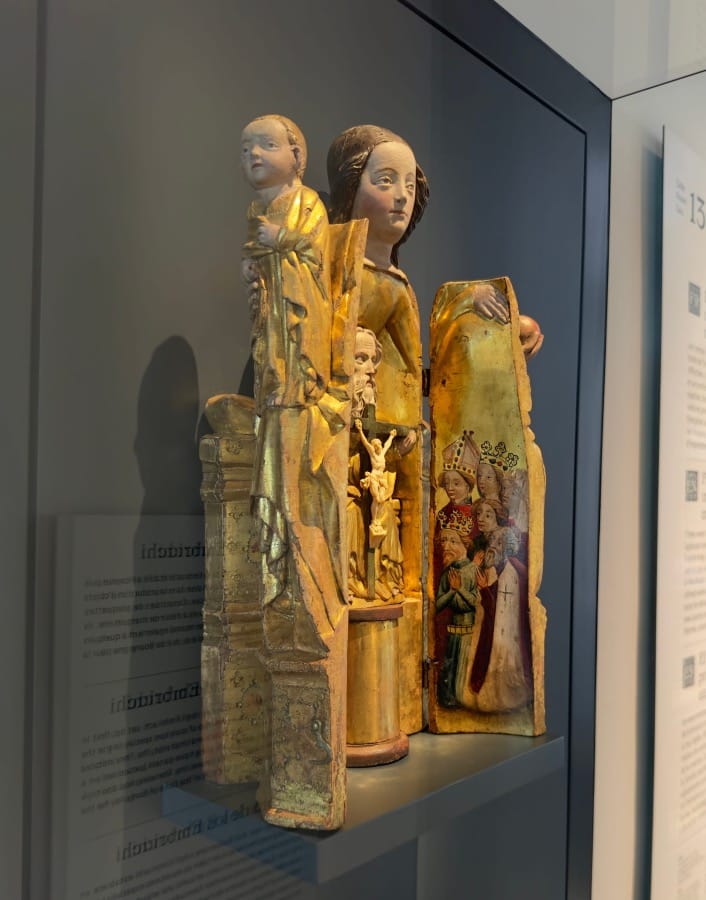
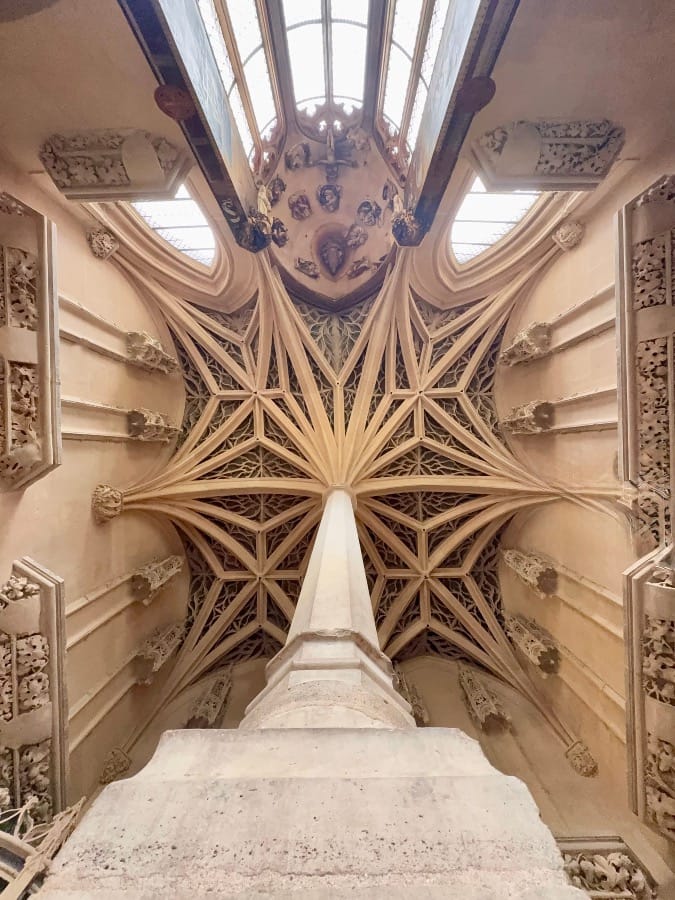

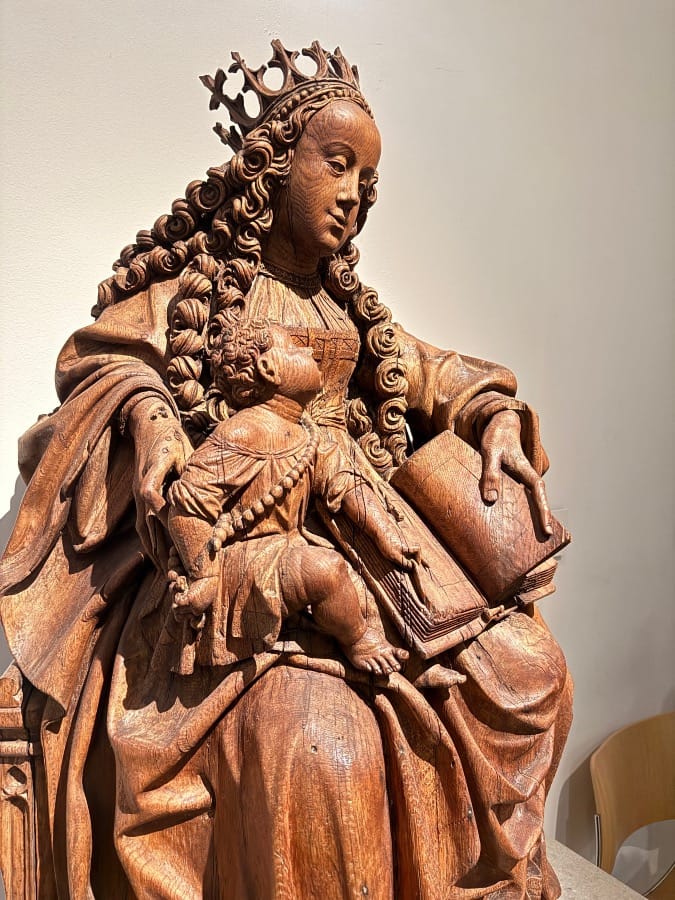
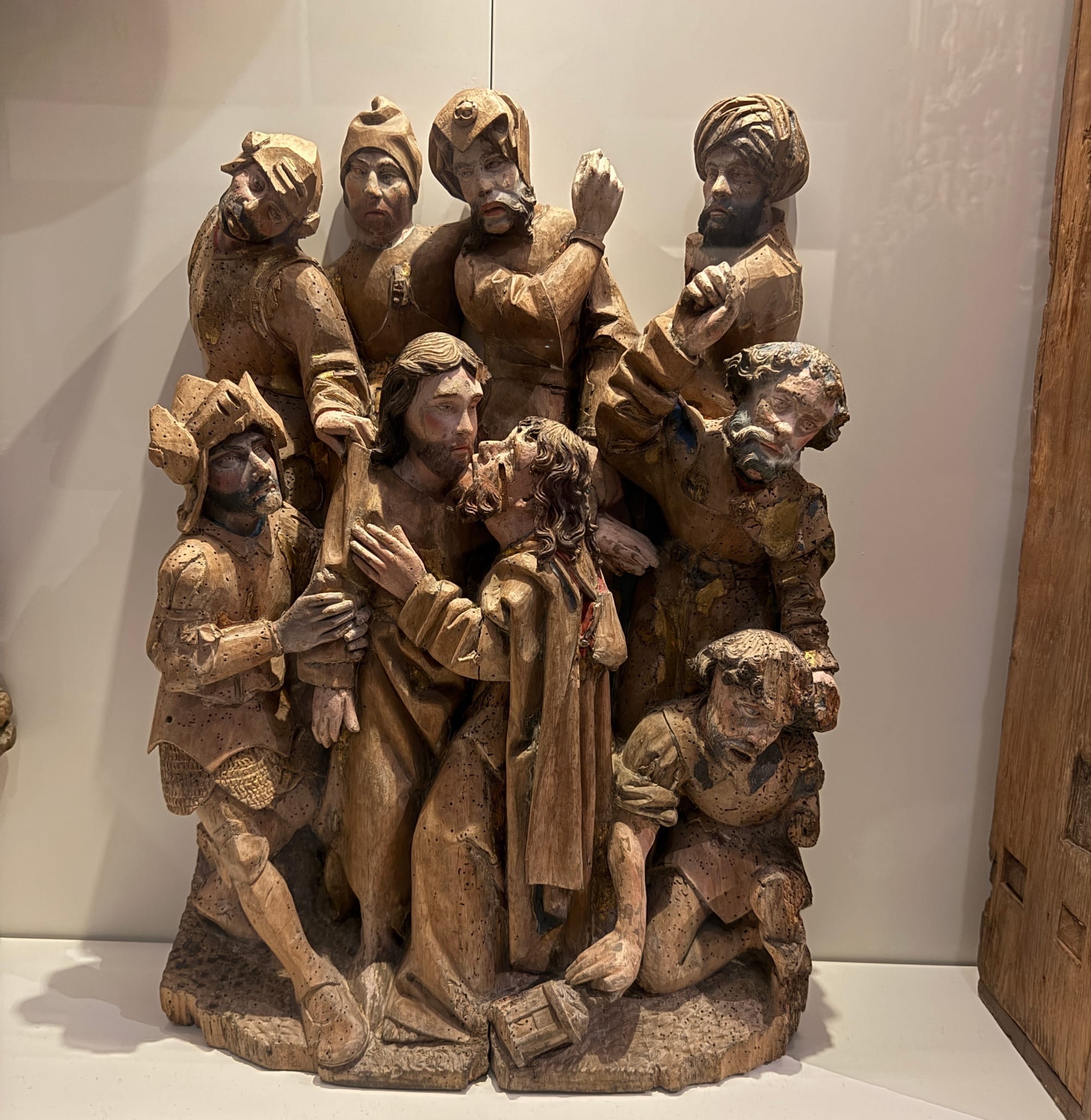
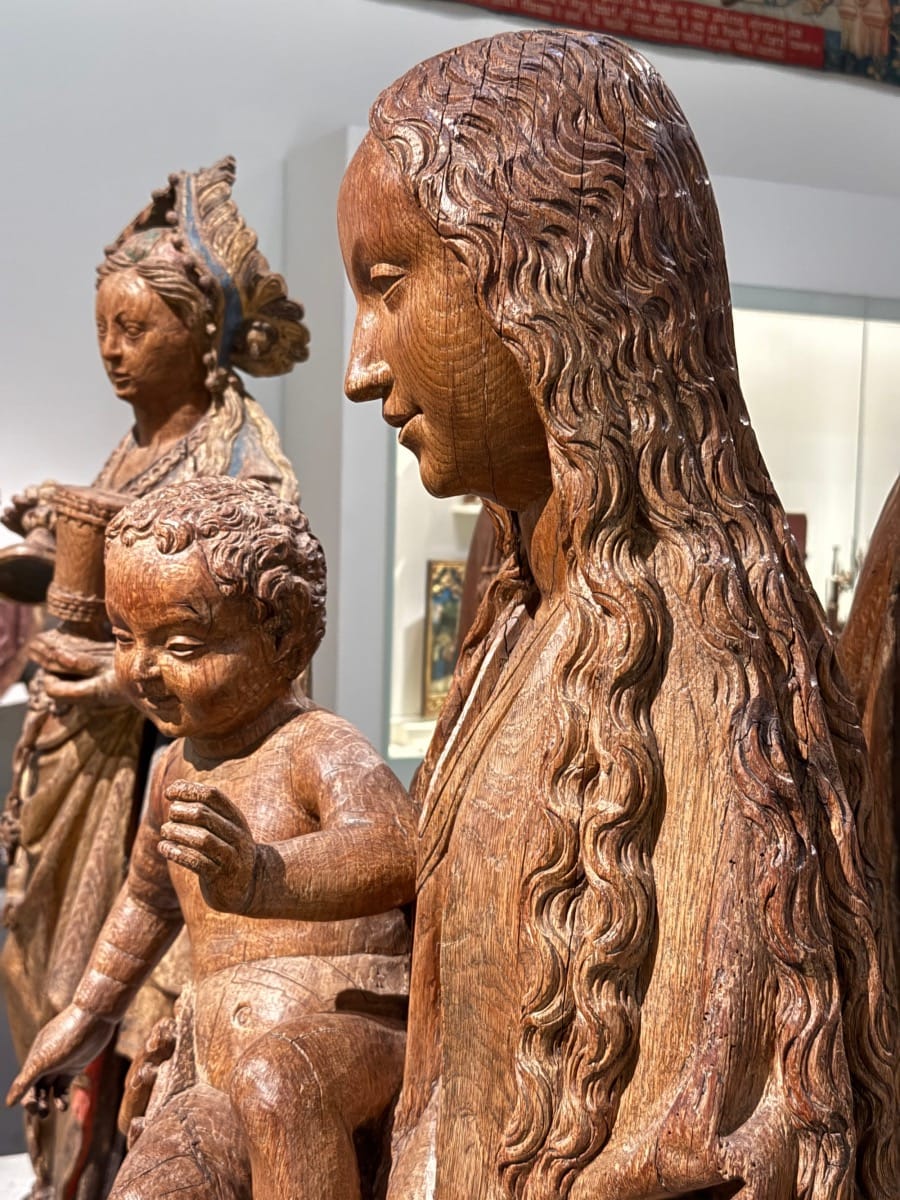
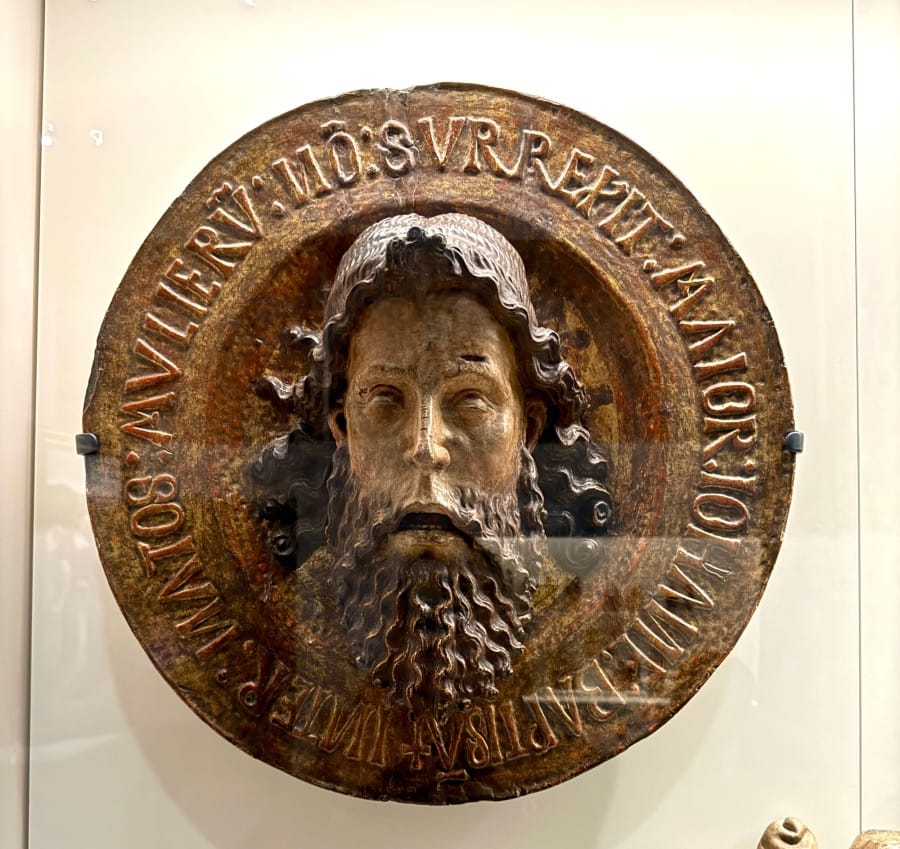
The Lady and the Unicorn Tapestries c 1500
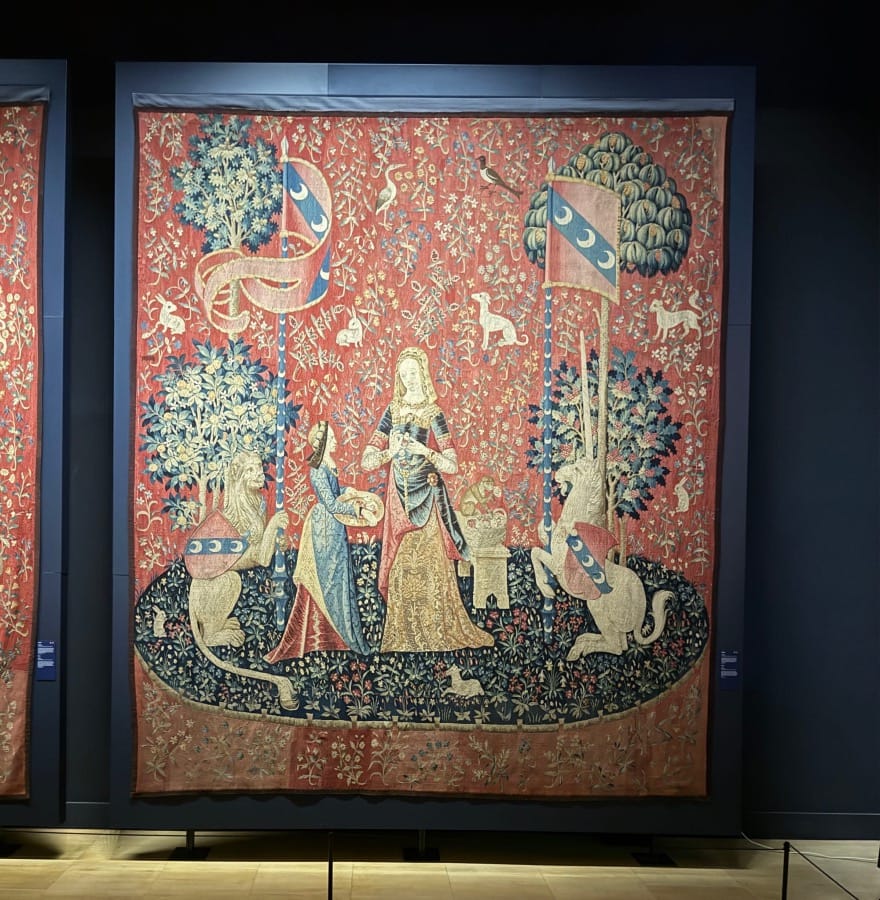
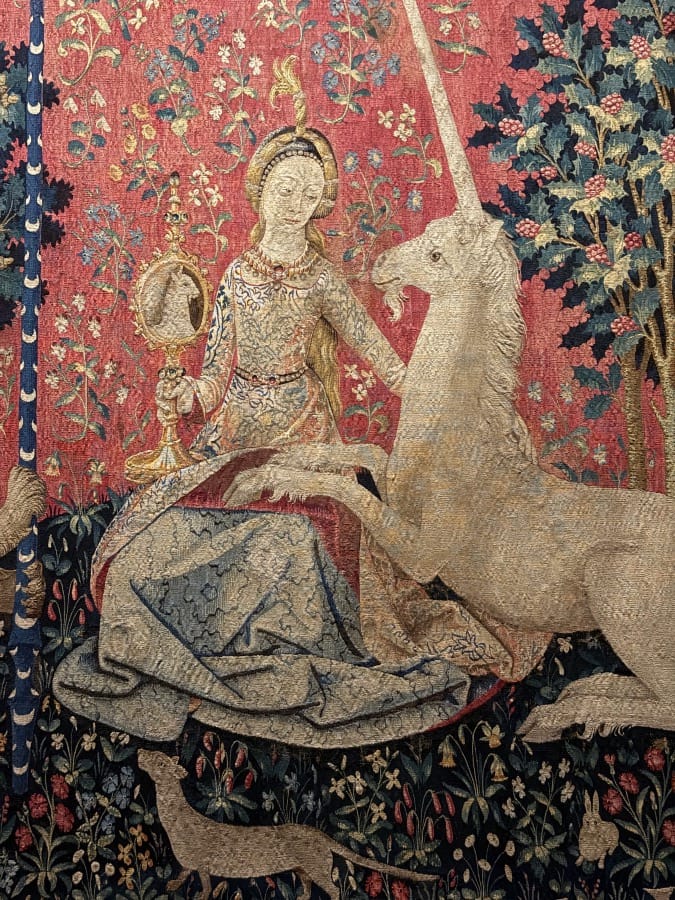
Paris in Particular: A City Shaped by Countless Hands
Whenever I visit a big city, I try not to spread myself too thinly. Instead, I choose a corner, a cluster of streets, and explore the microcosm. In Paris, this means lingering in the Latin Quarter – its pre Haussmann streets, courtyards, and gardens – with only brief excursions beyond, including a visit to the Fondation Louis Vuitton.
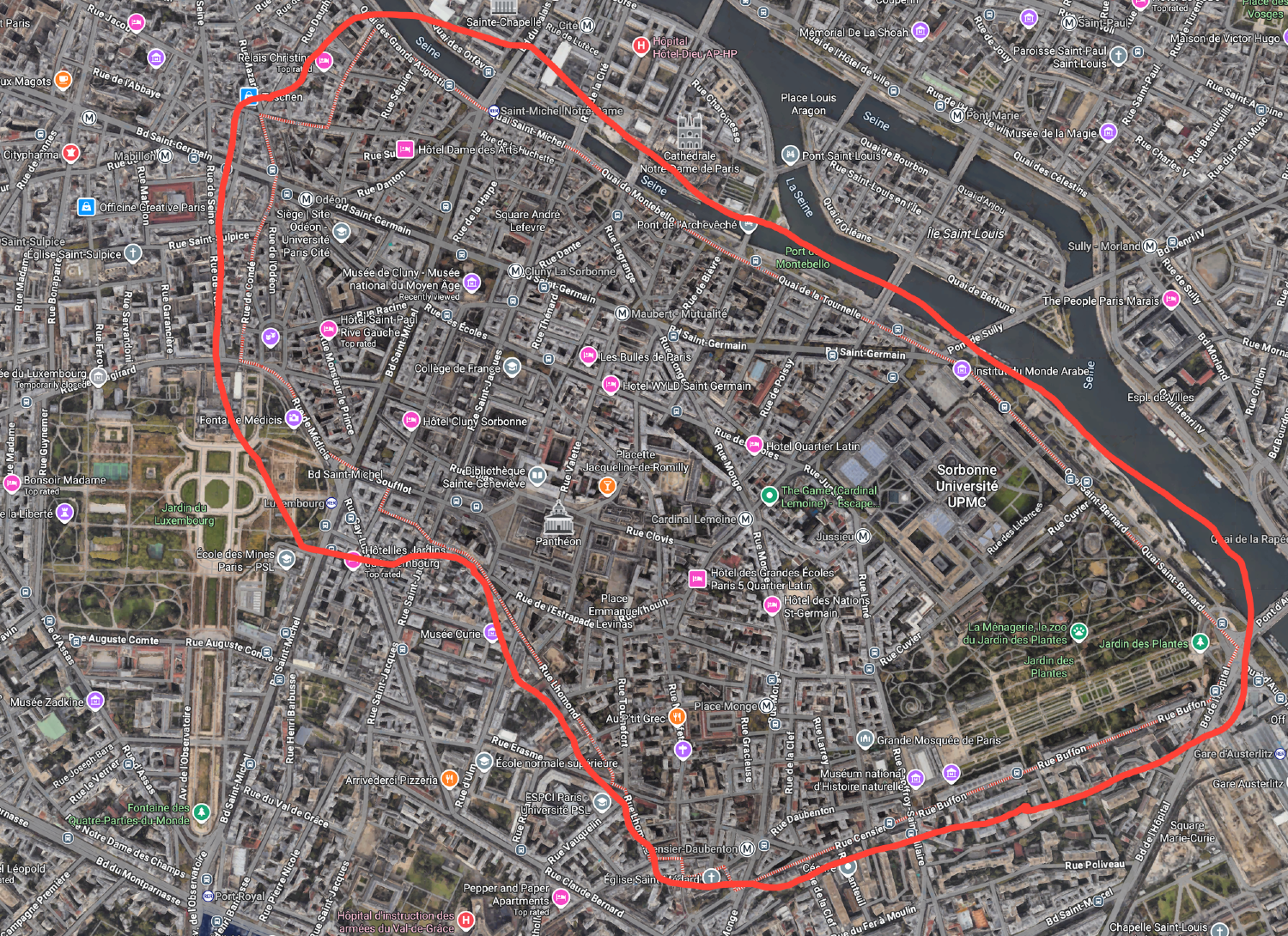
Paris is a city that resists being held in a single frame. Its essence lives not only in the sweep of its boulevards, but also in the fragments: a cigarette wedged in a crack of stone, graffiti across a wall, the floorscapes, the fleeting glimpse of a courtyard through a decorative gateway. To know Paris is to notice the overlooked – the idiosyncrasies that turn a city into something felt as well as seen.
Here are some of the things that caught the attention of my lens:

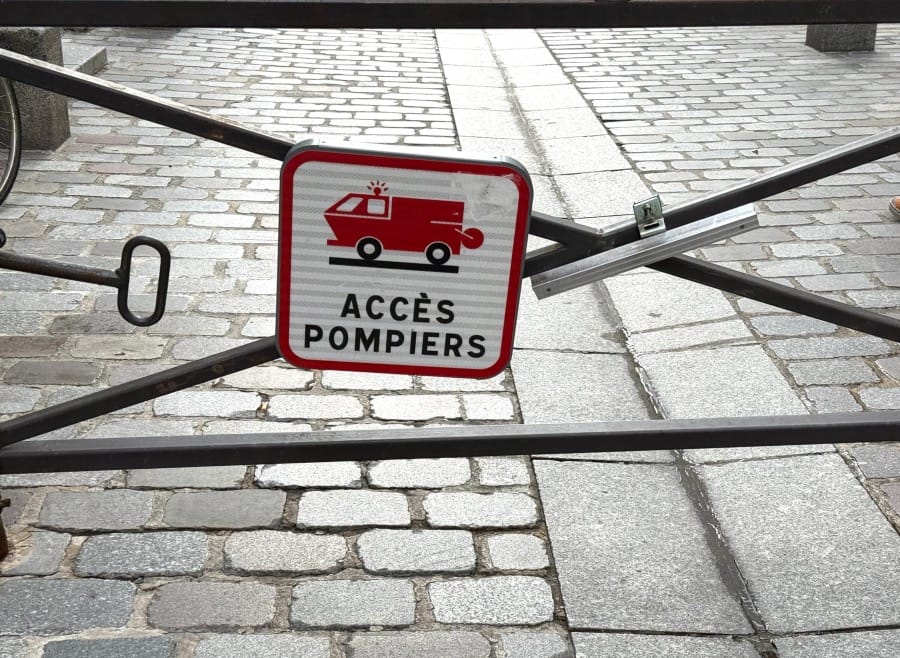
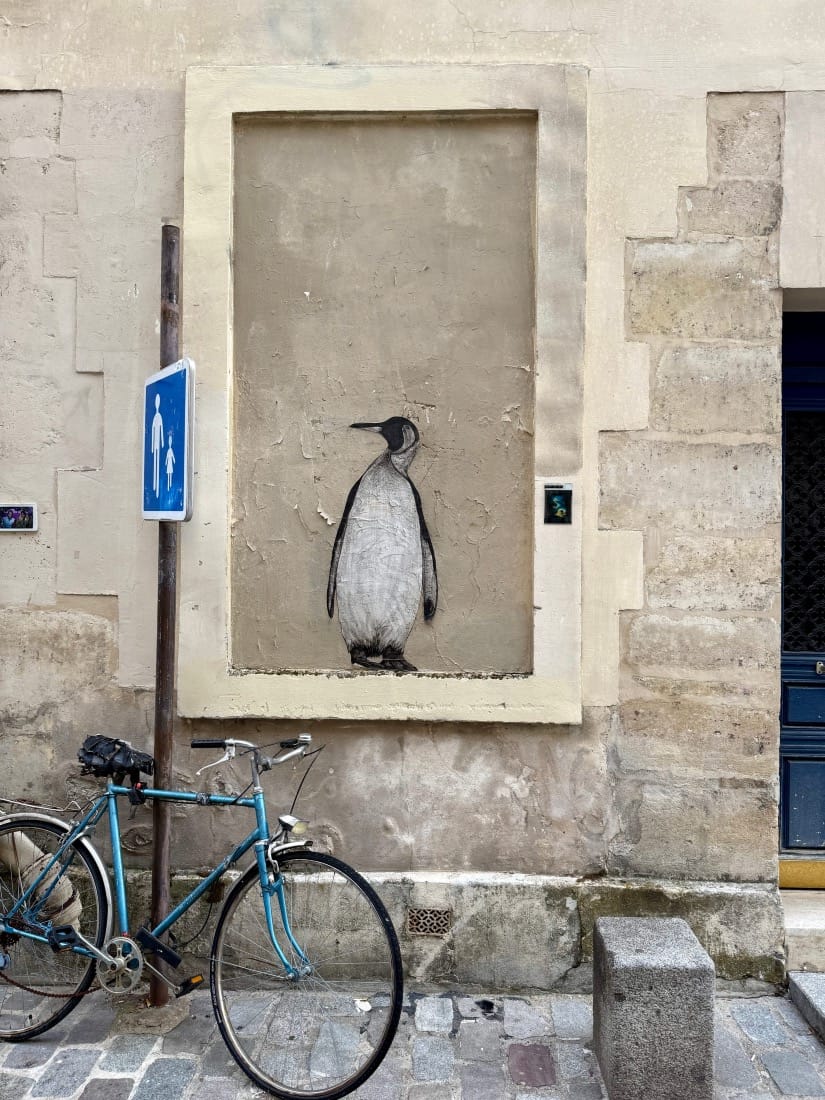
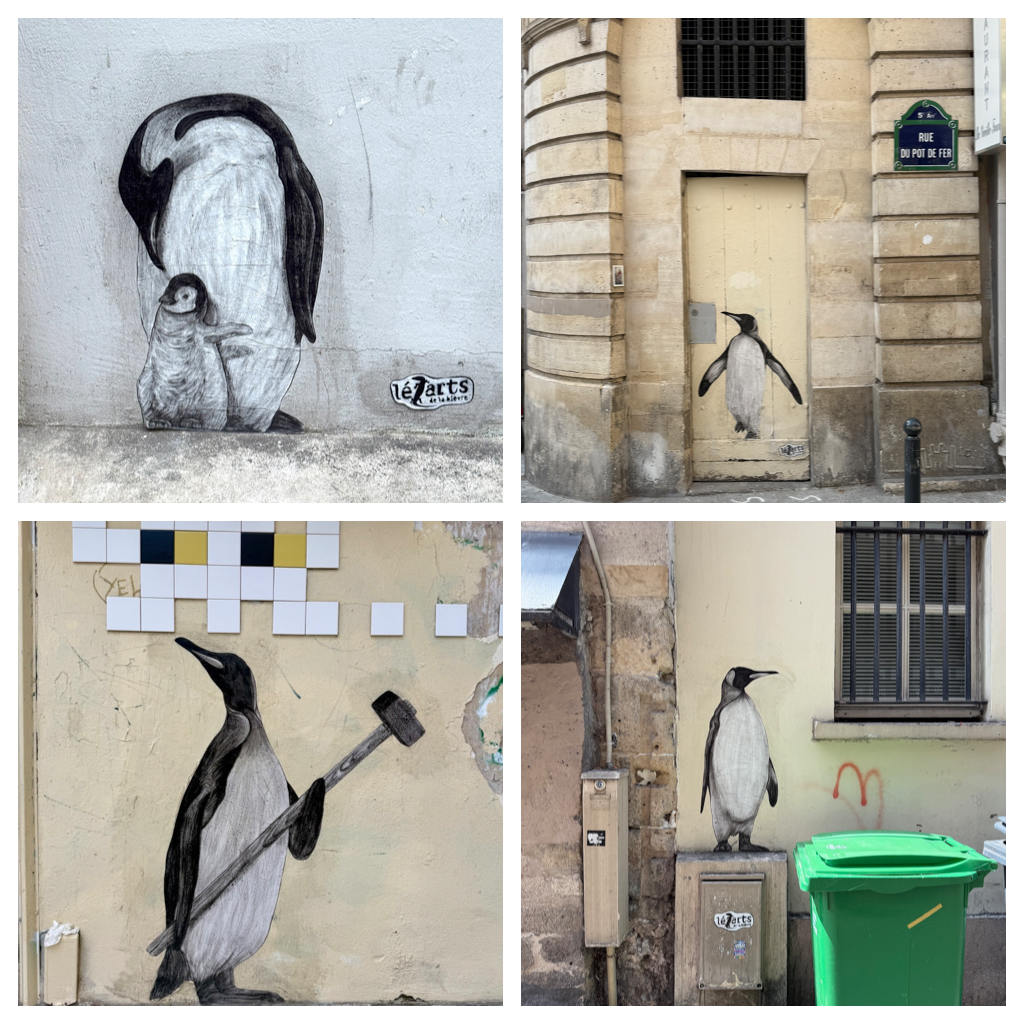
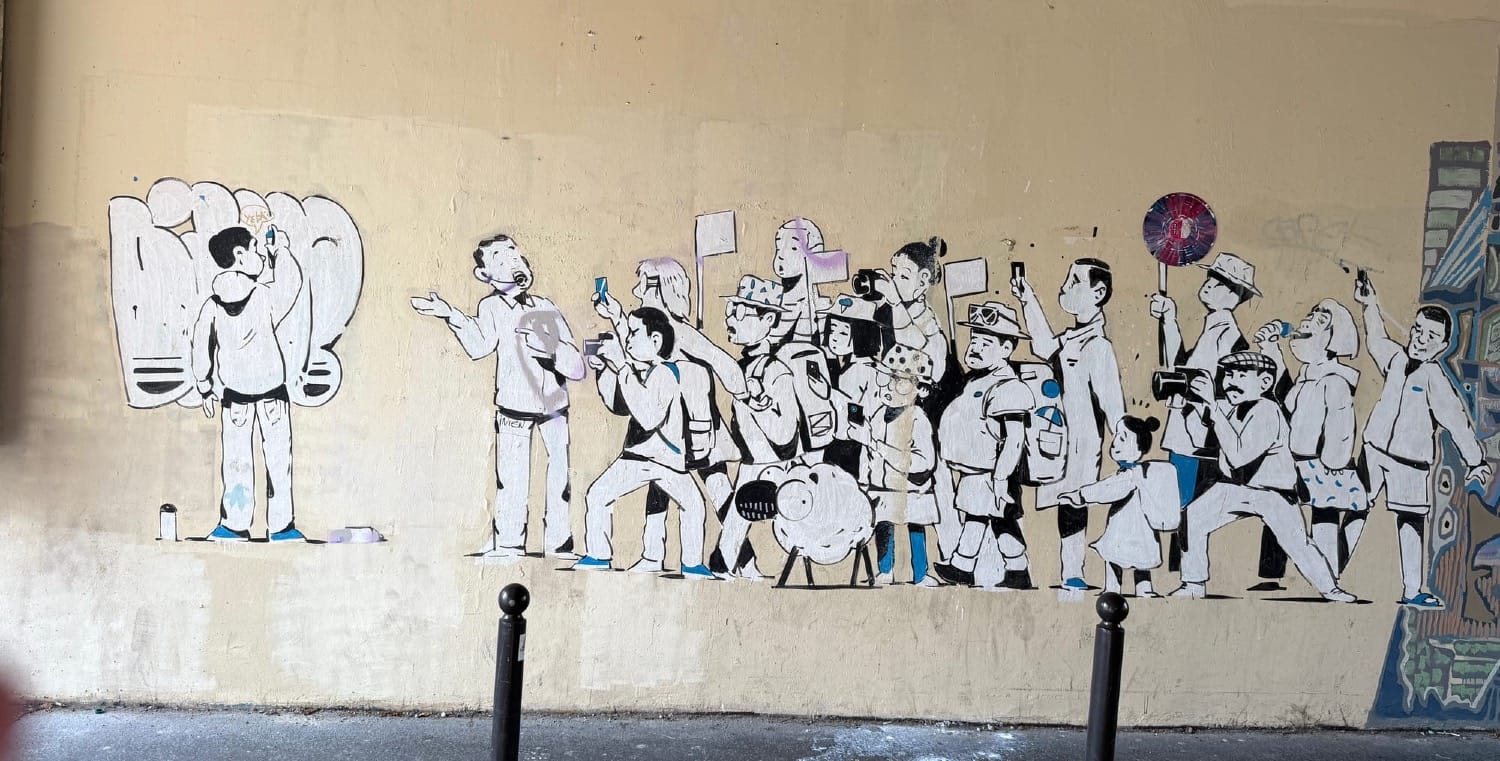
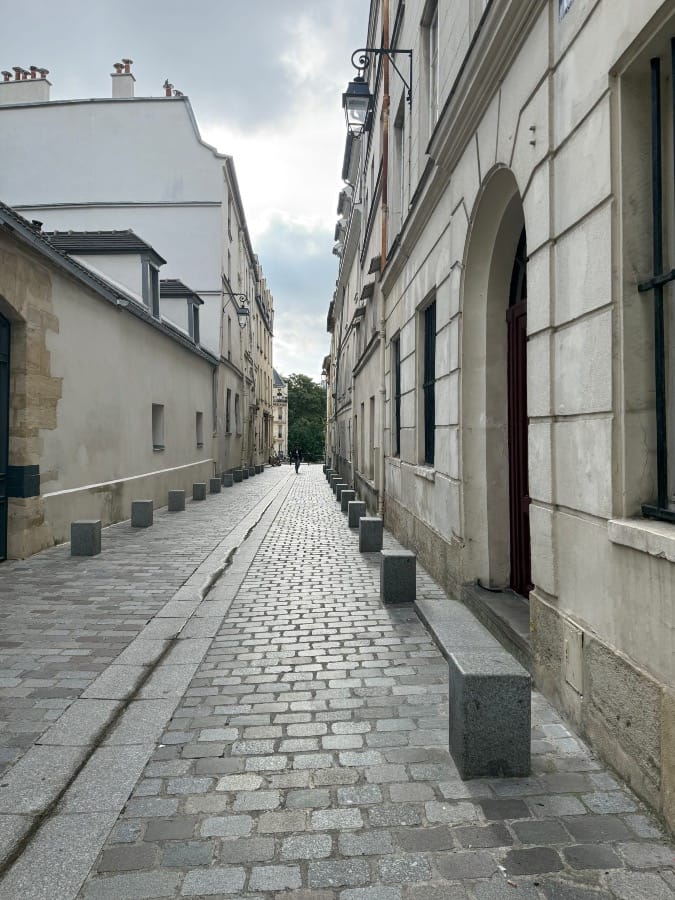


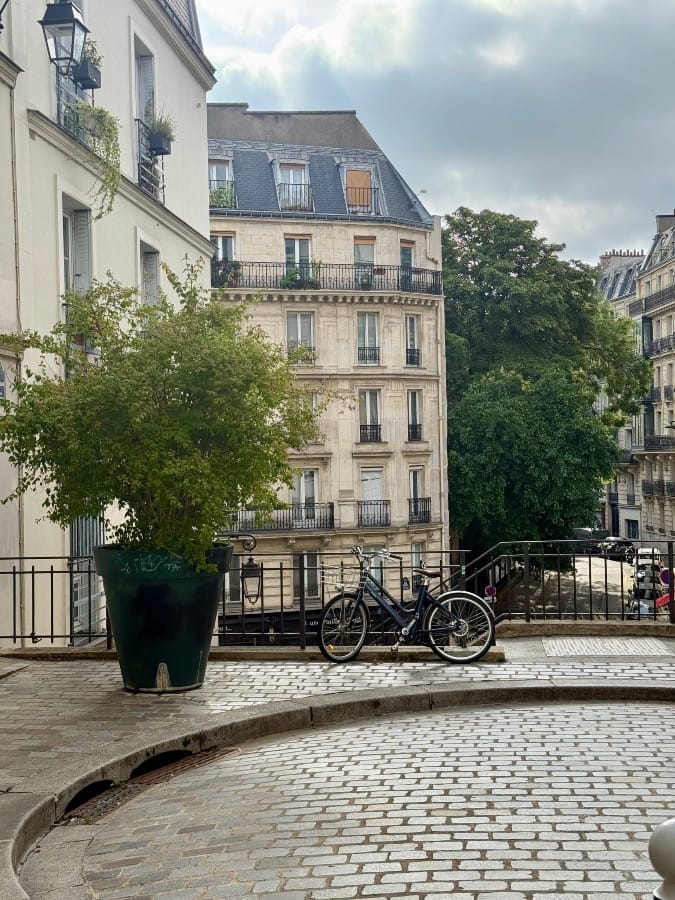
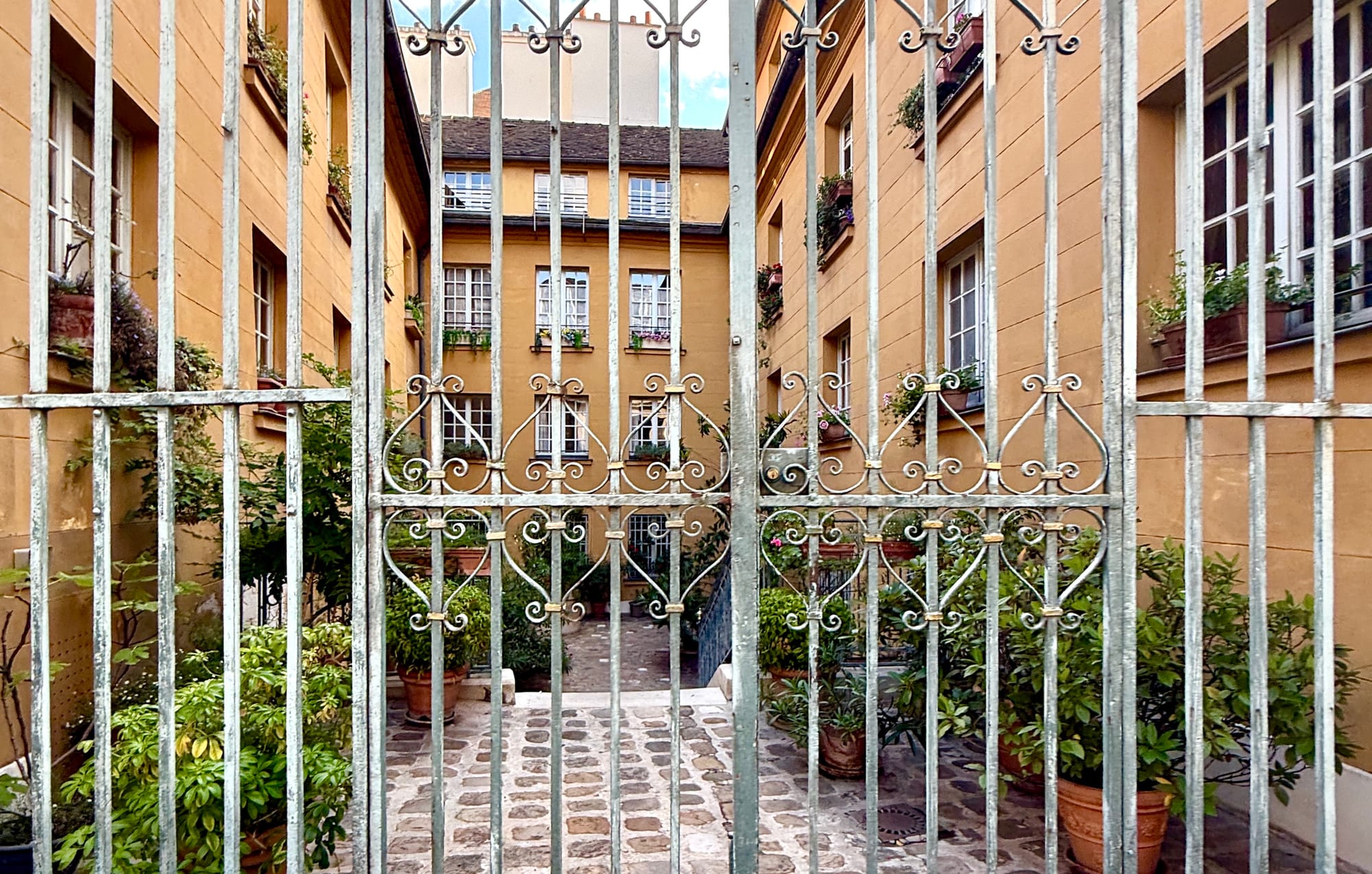
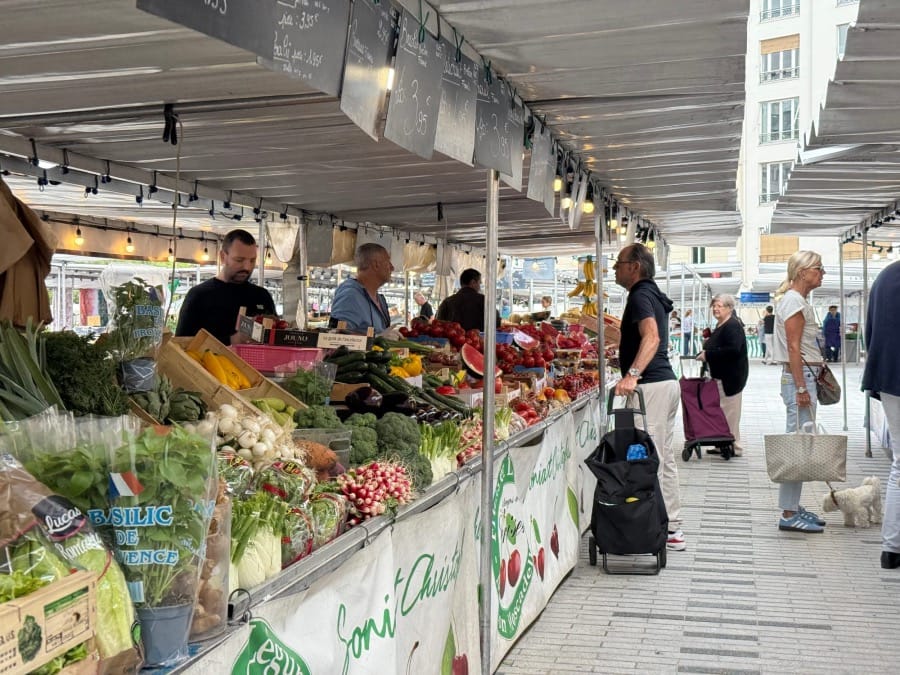
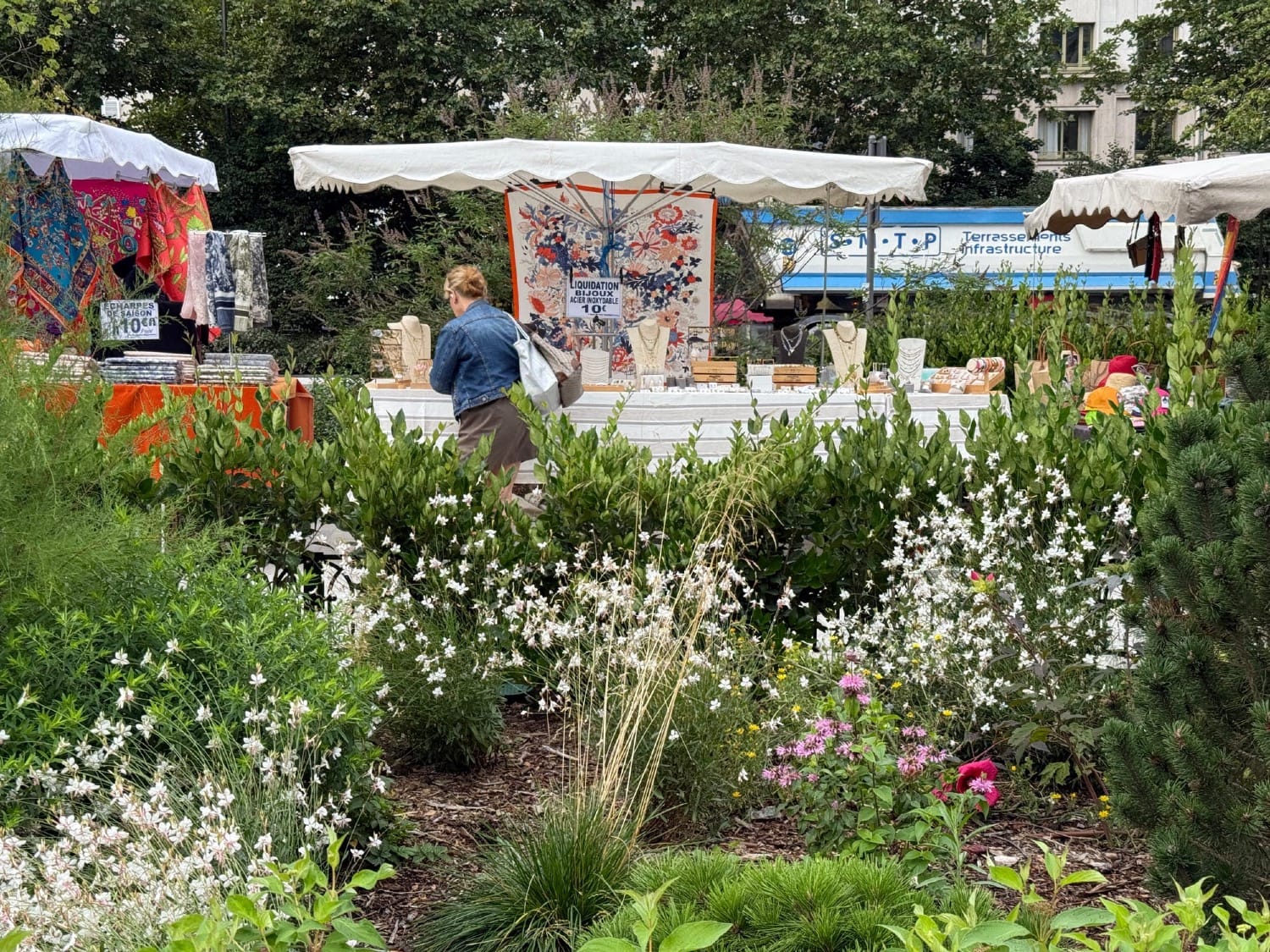
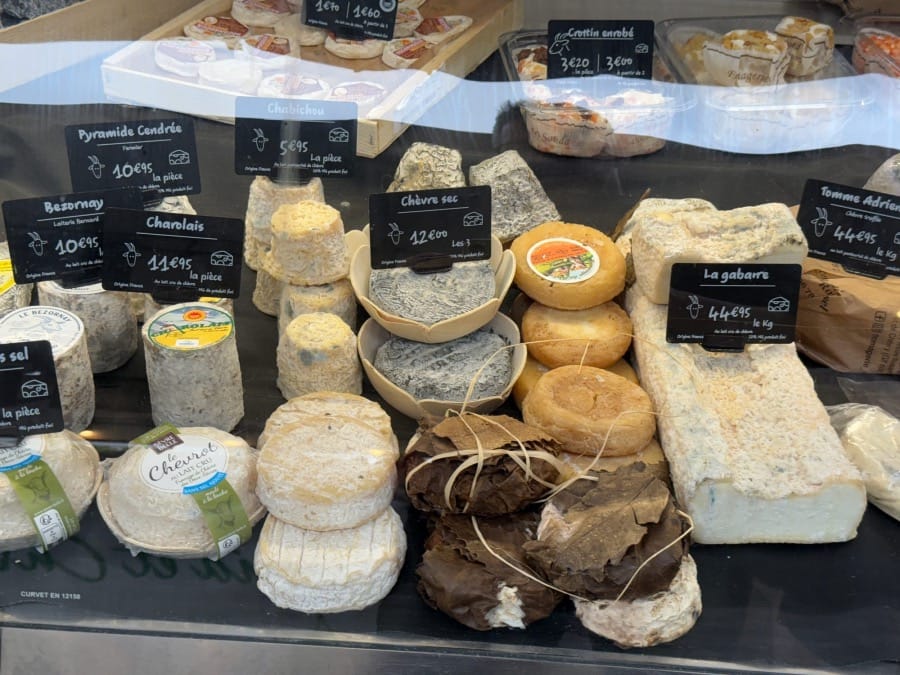
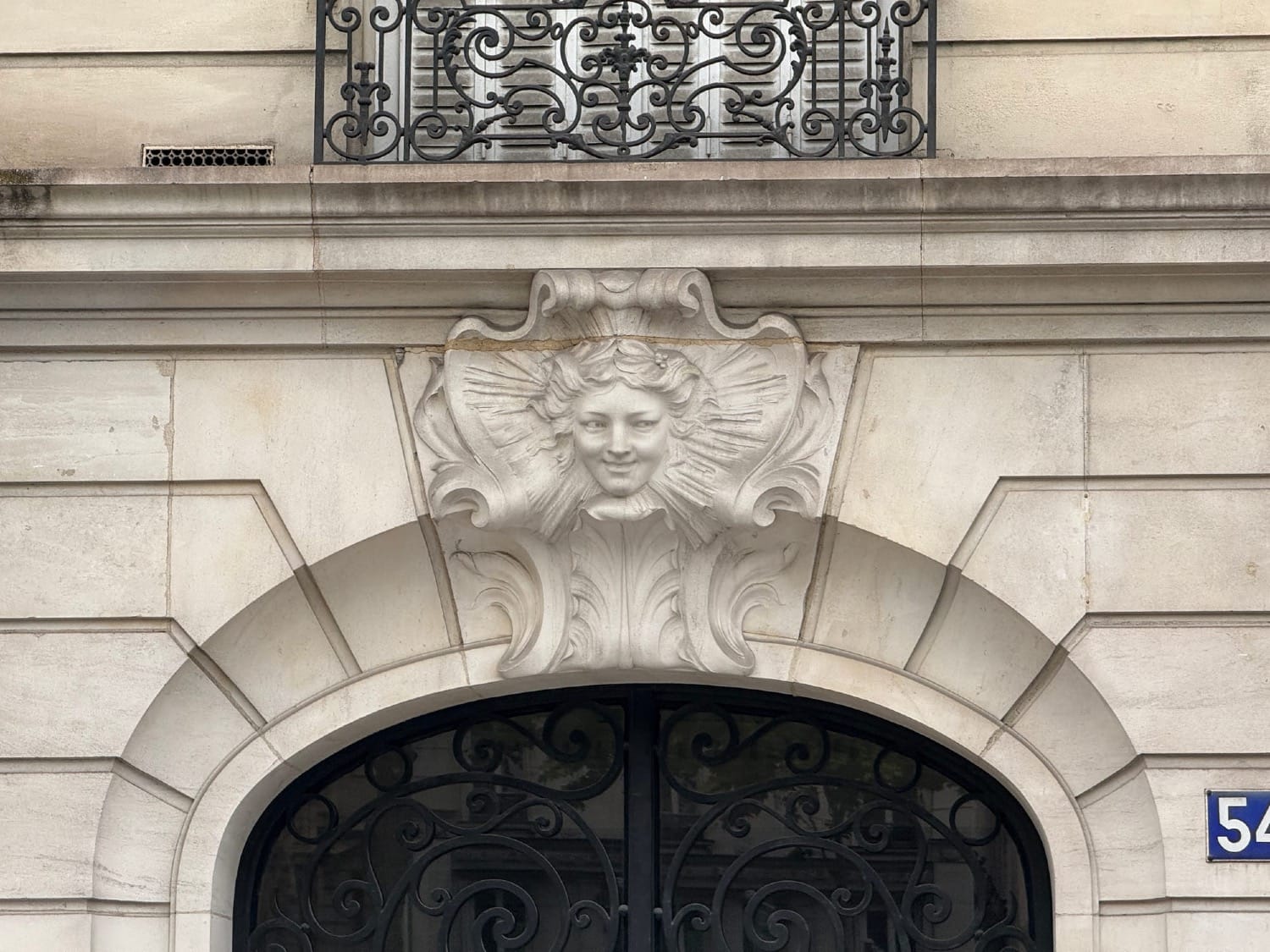
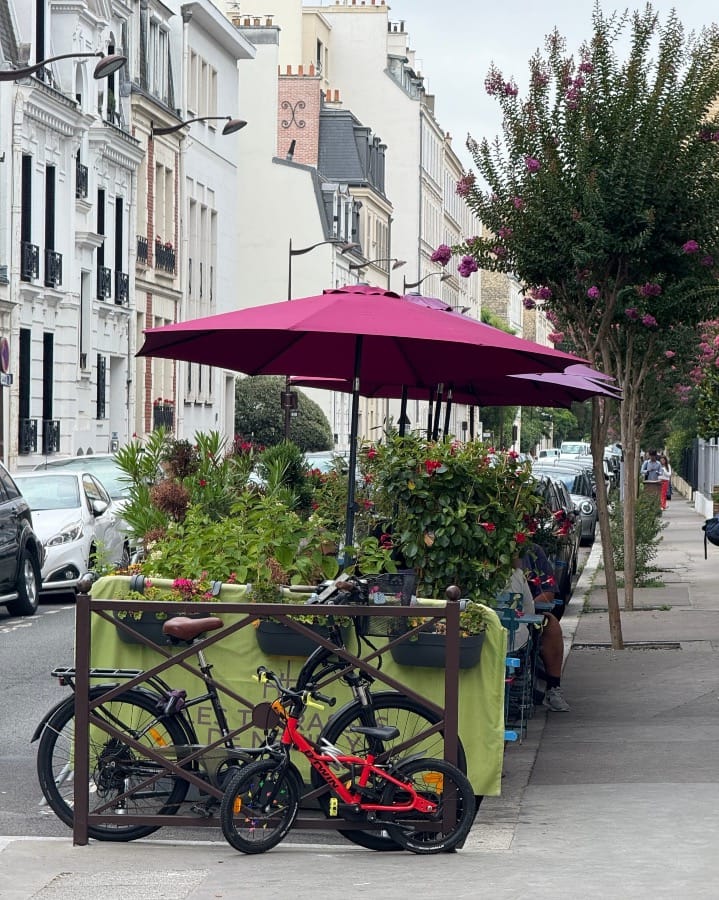
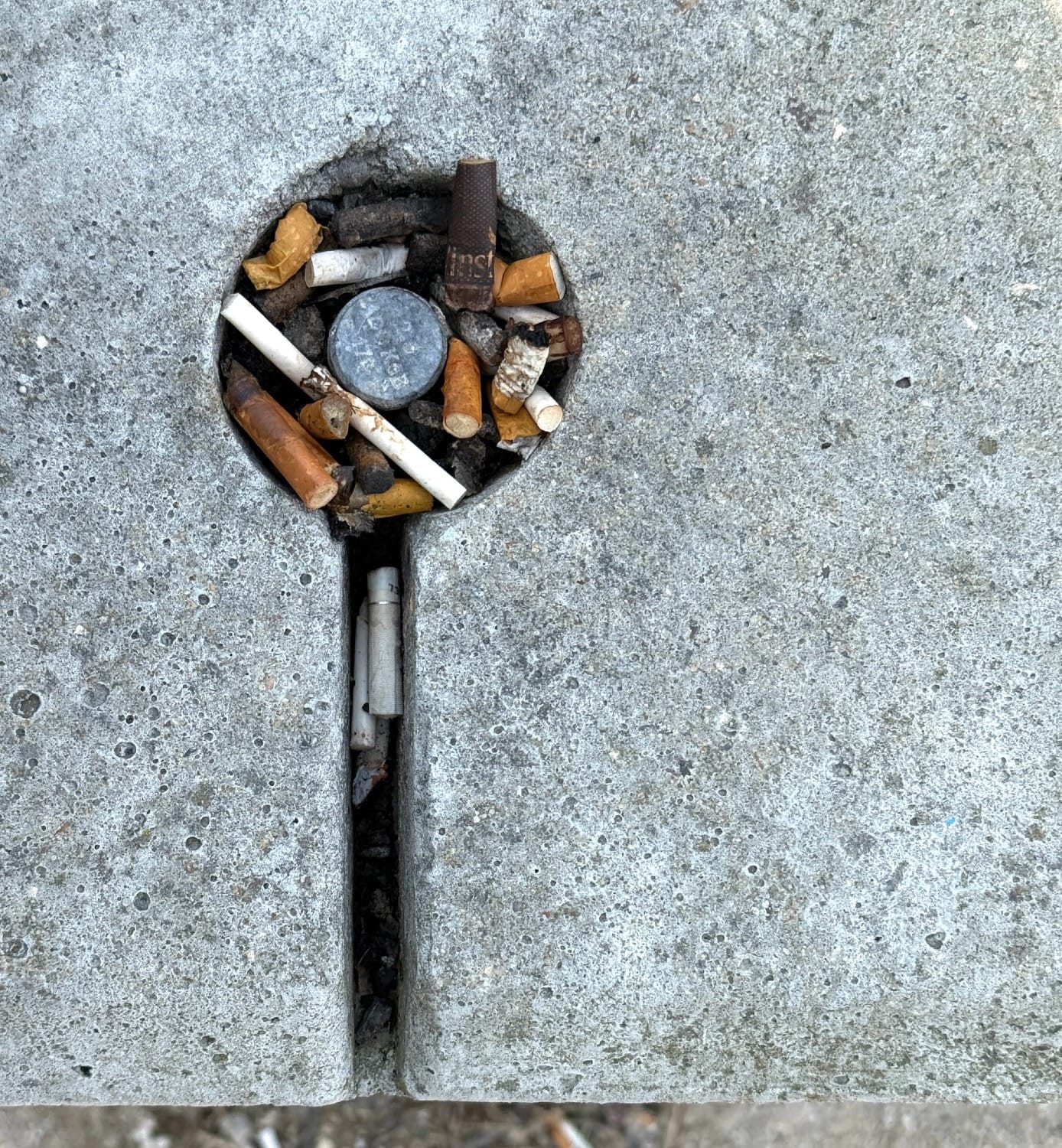
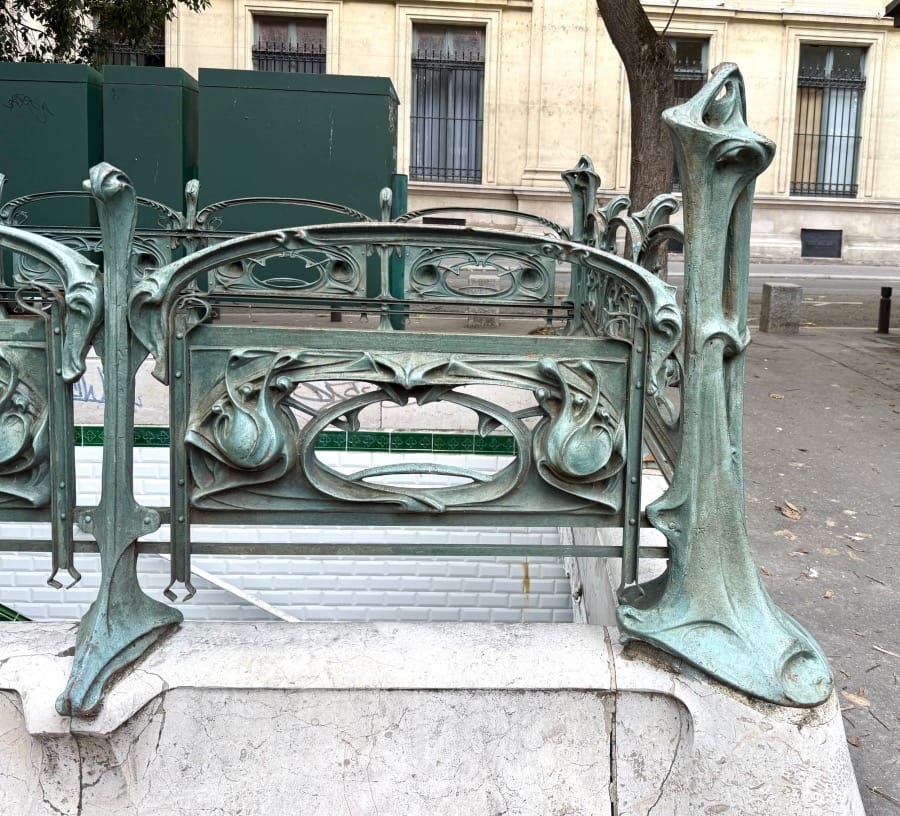
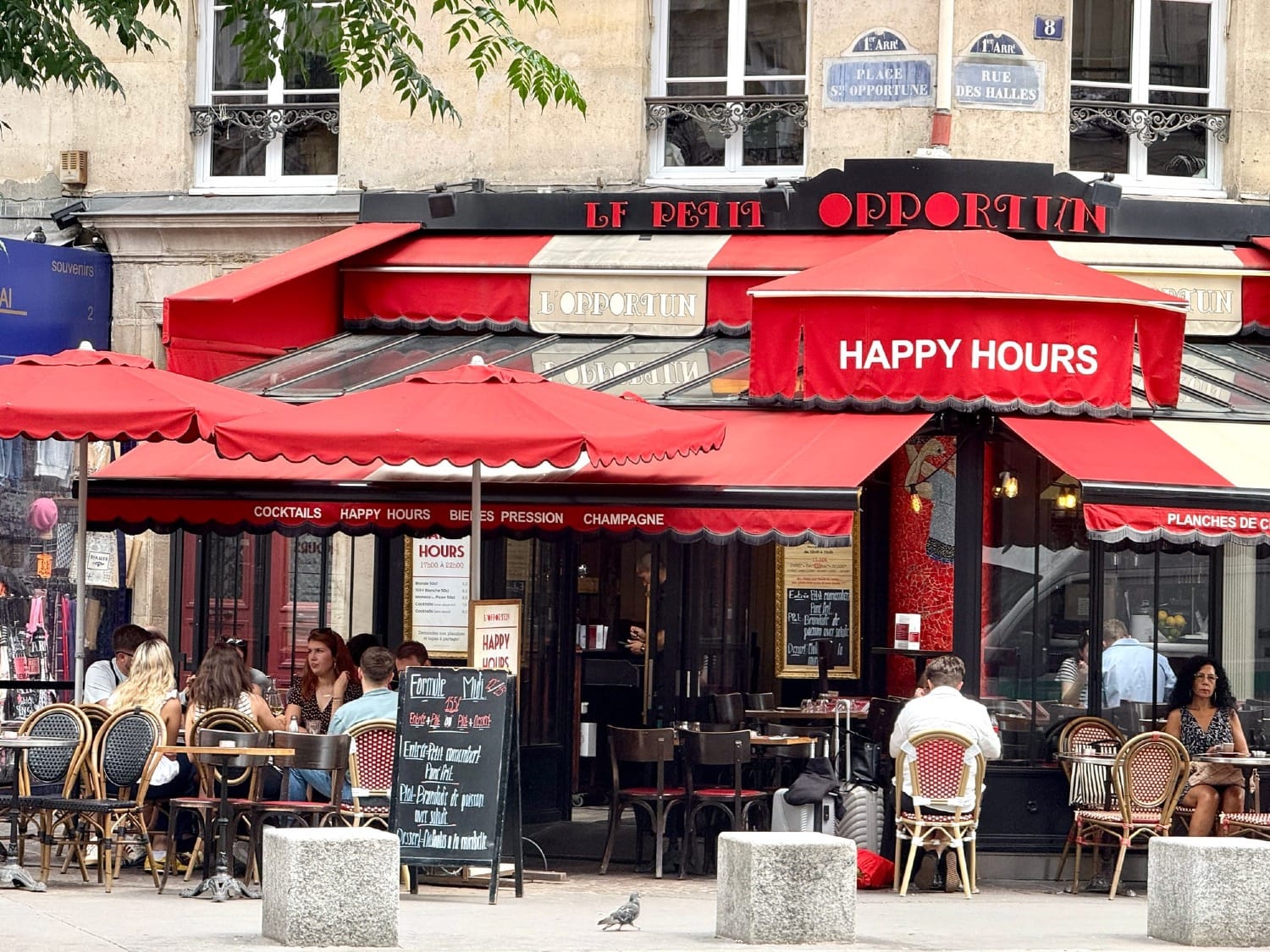
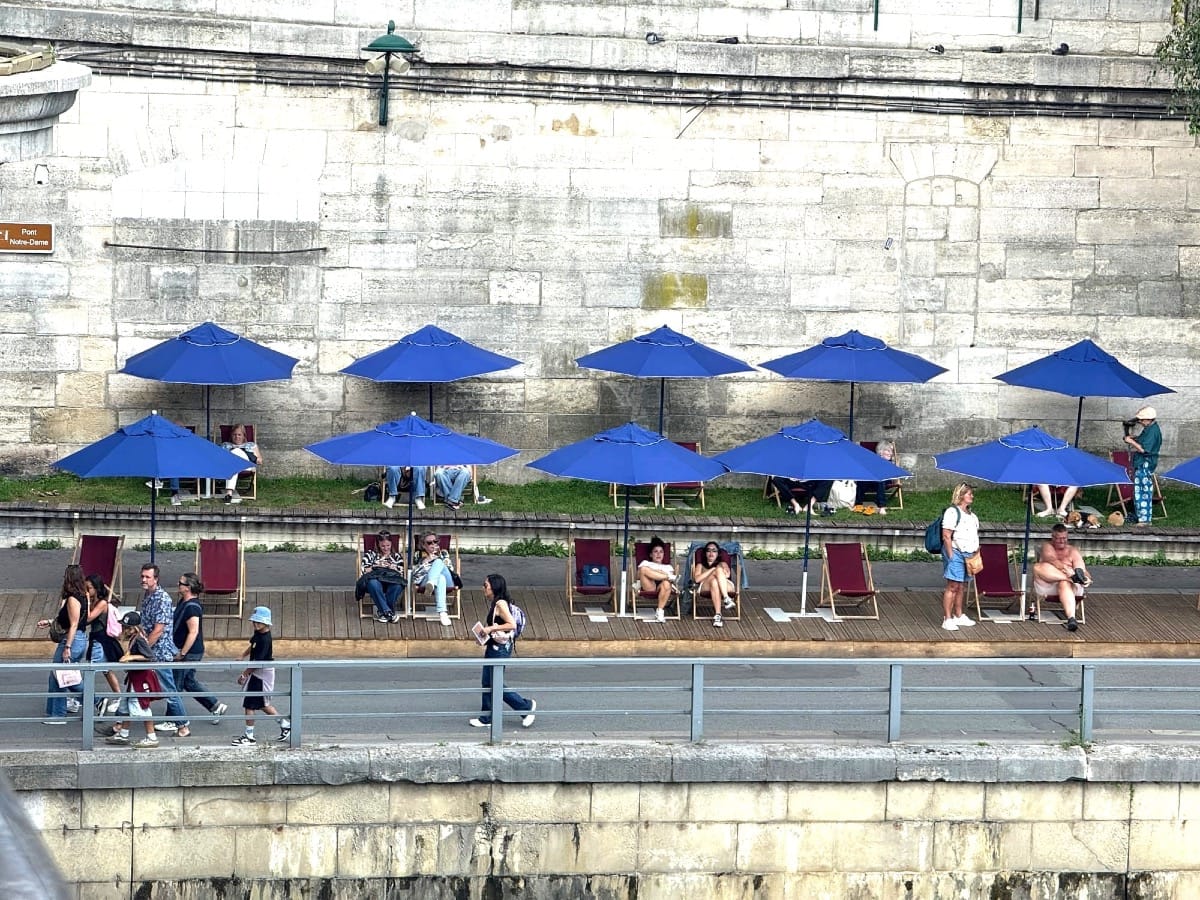
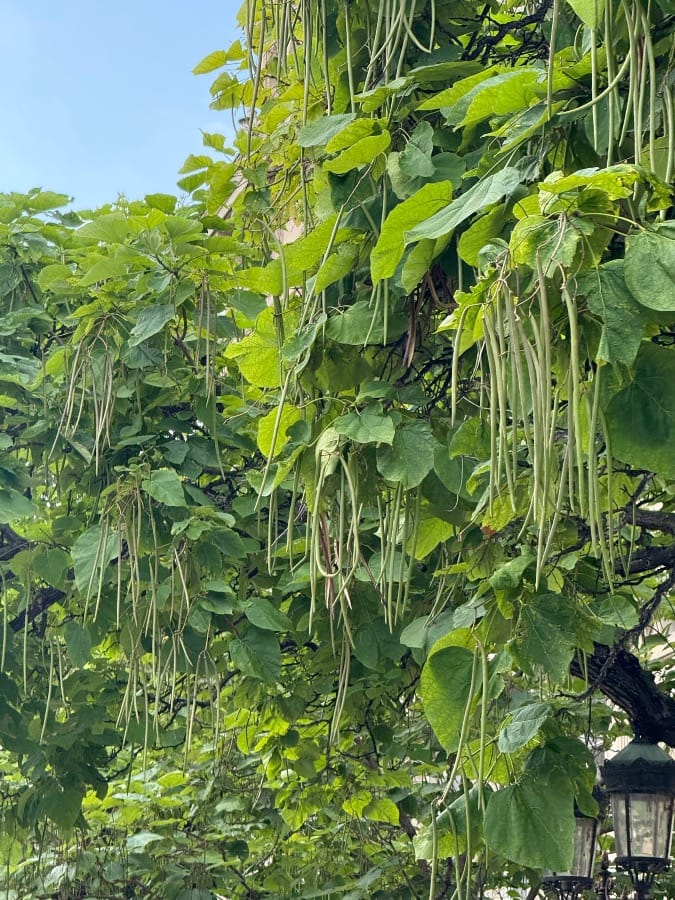
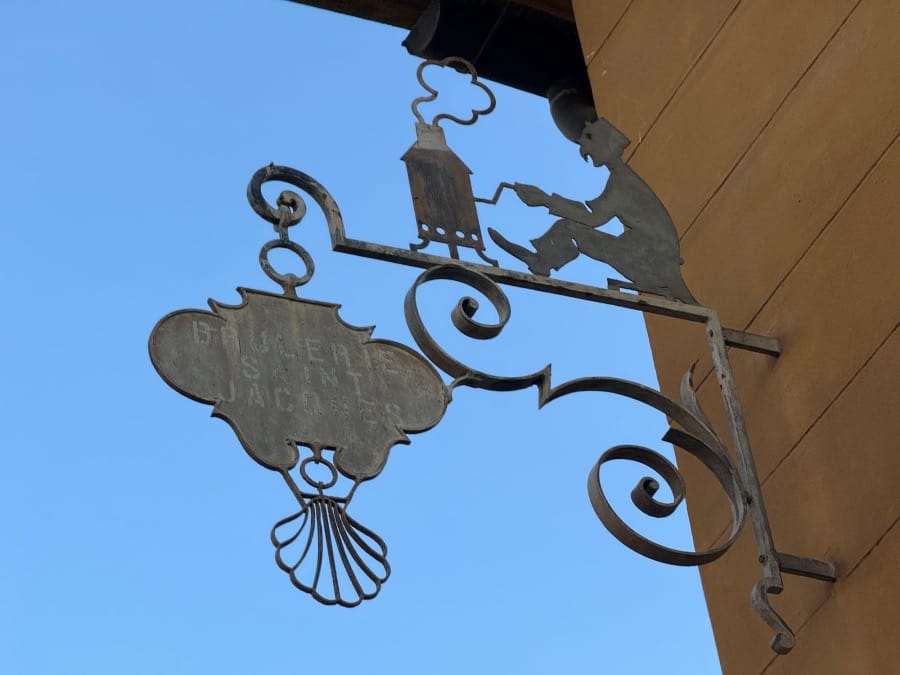
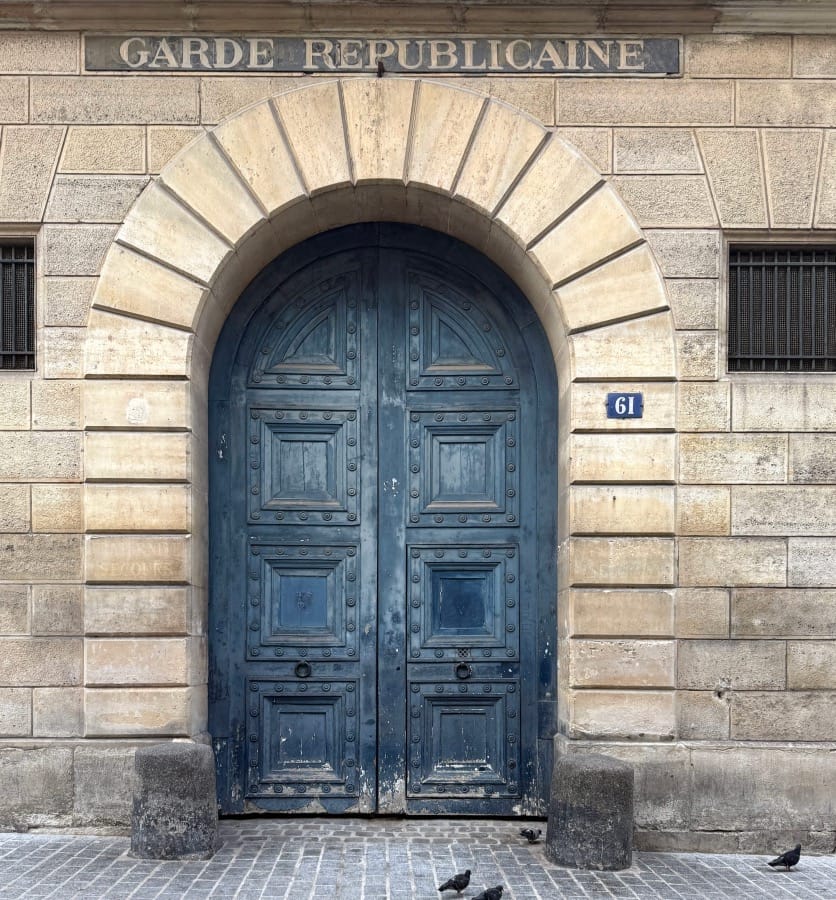
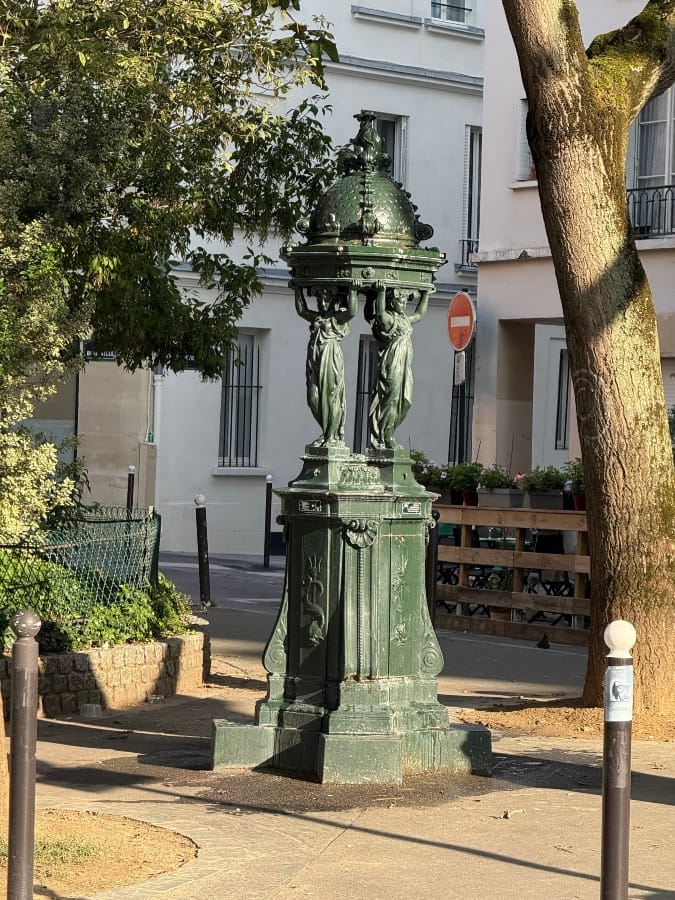
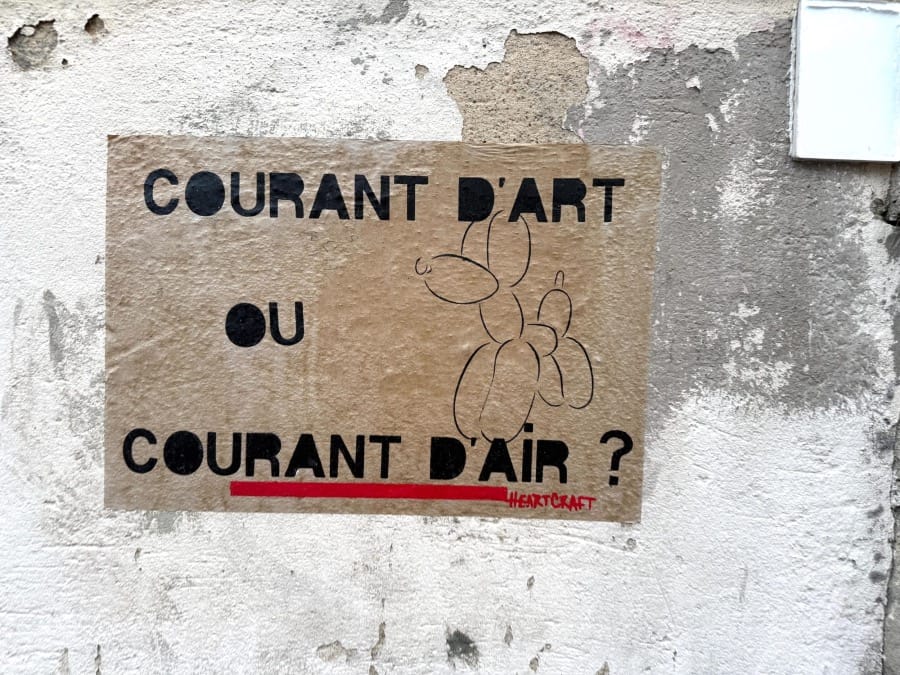
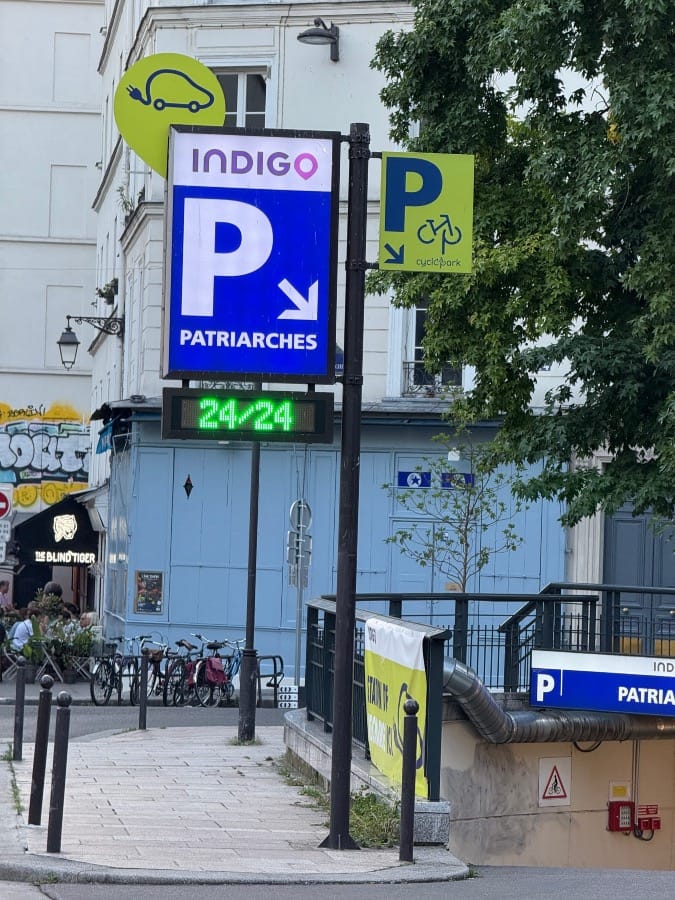
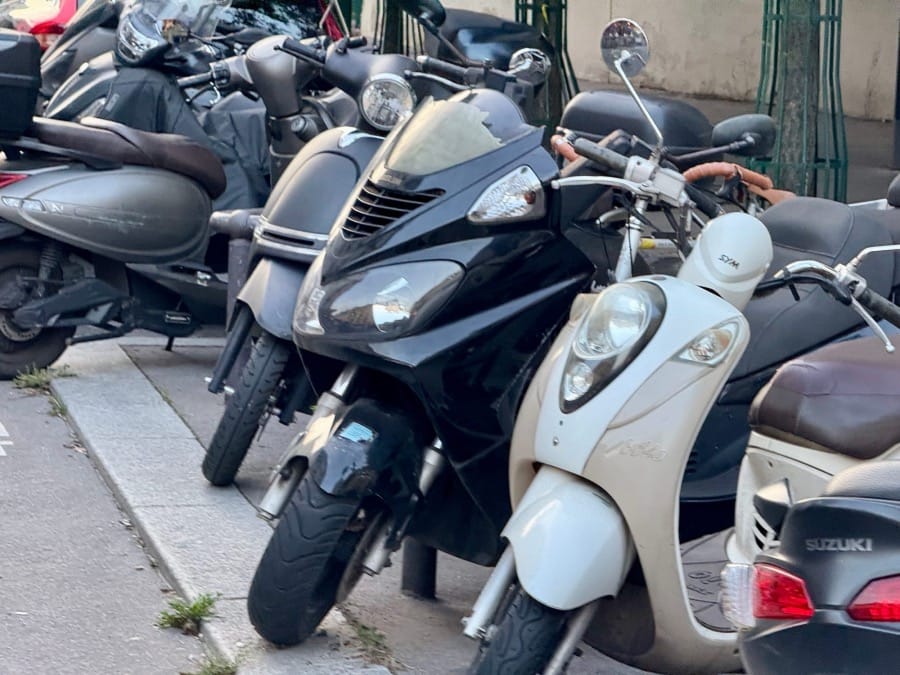
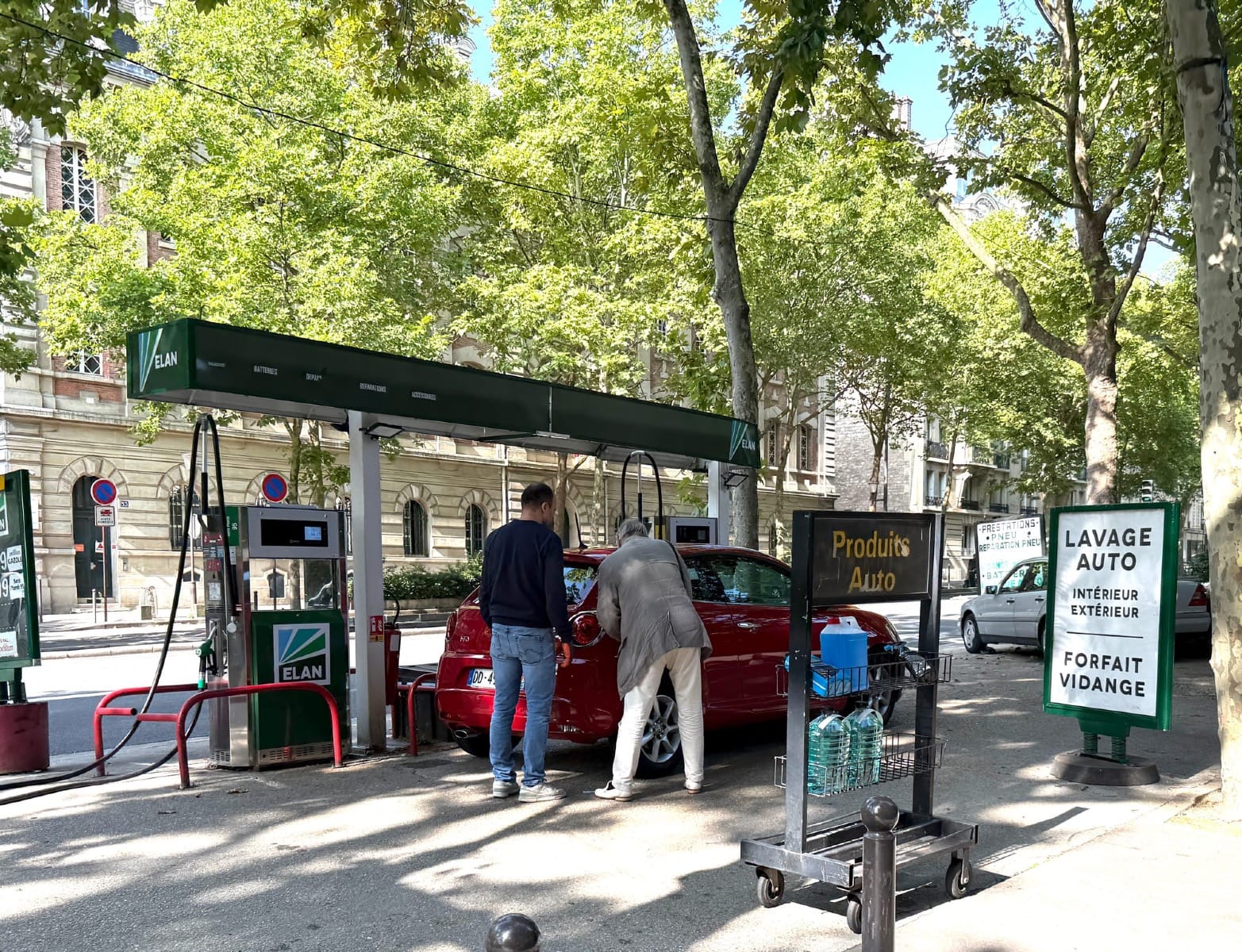
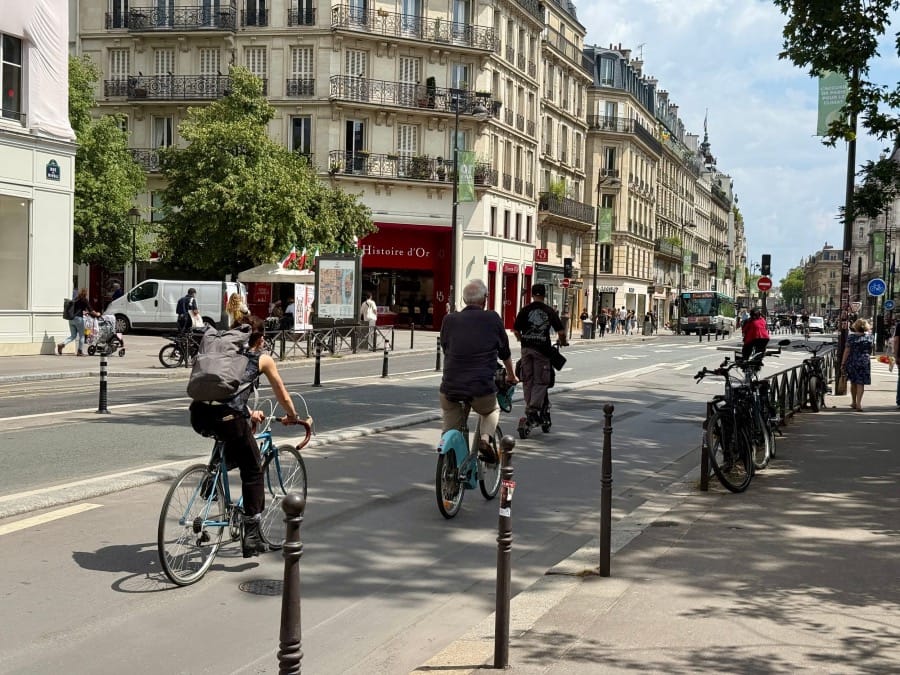
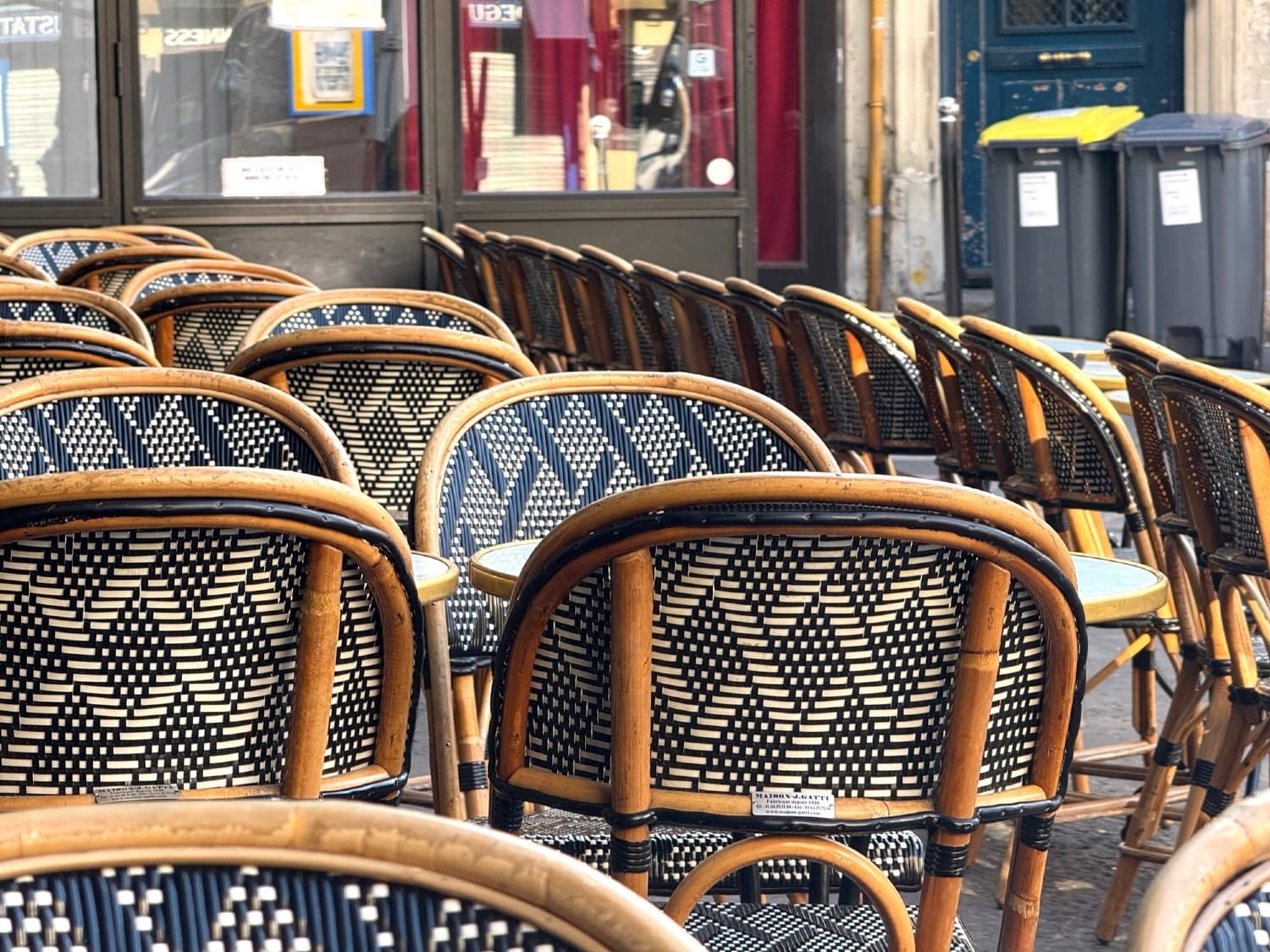
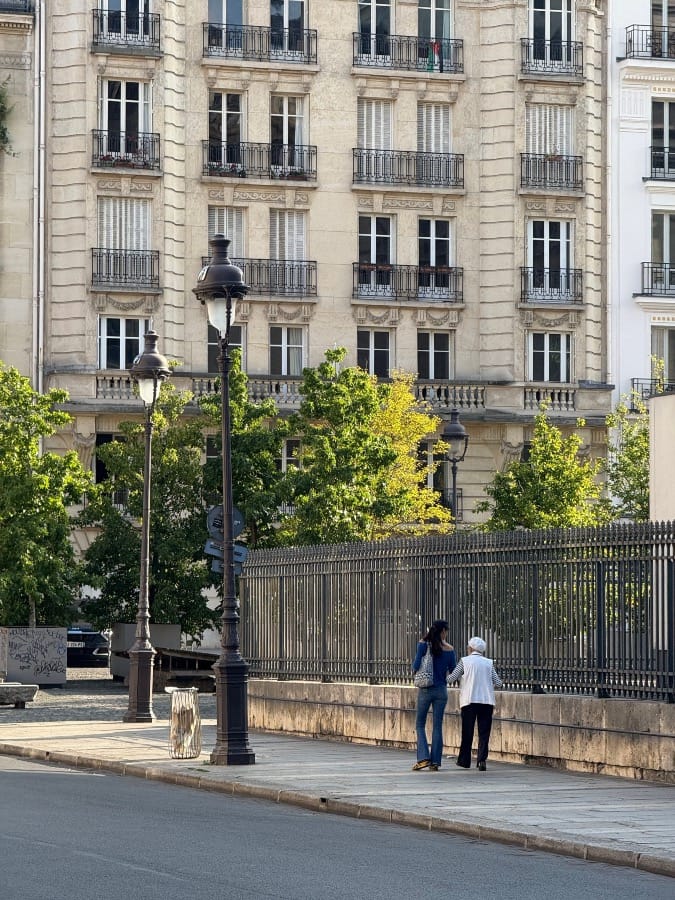
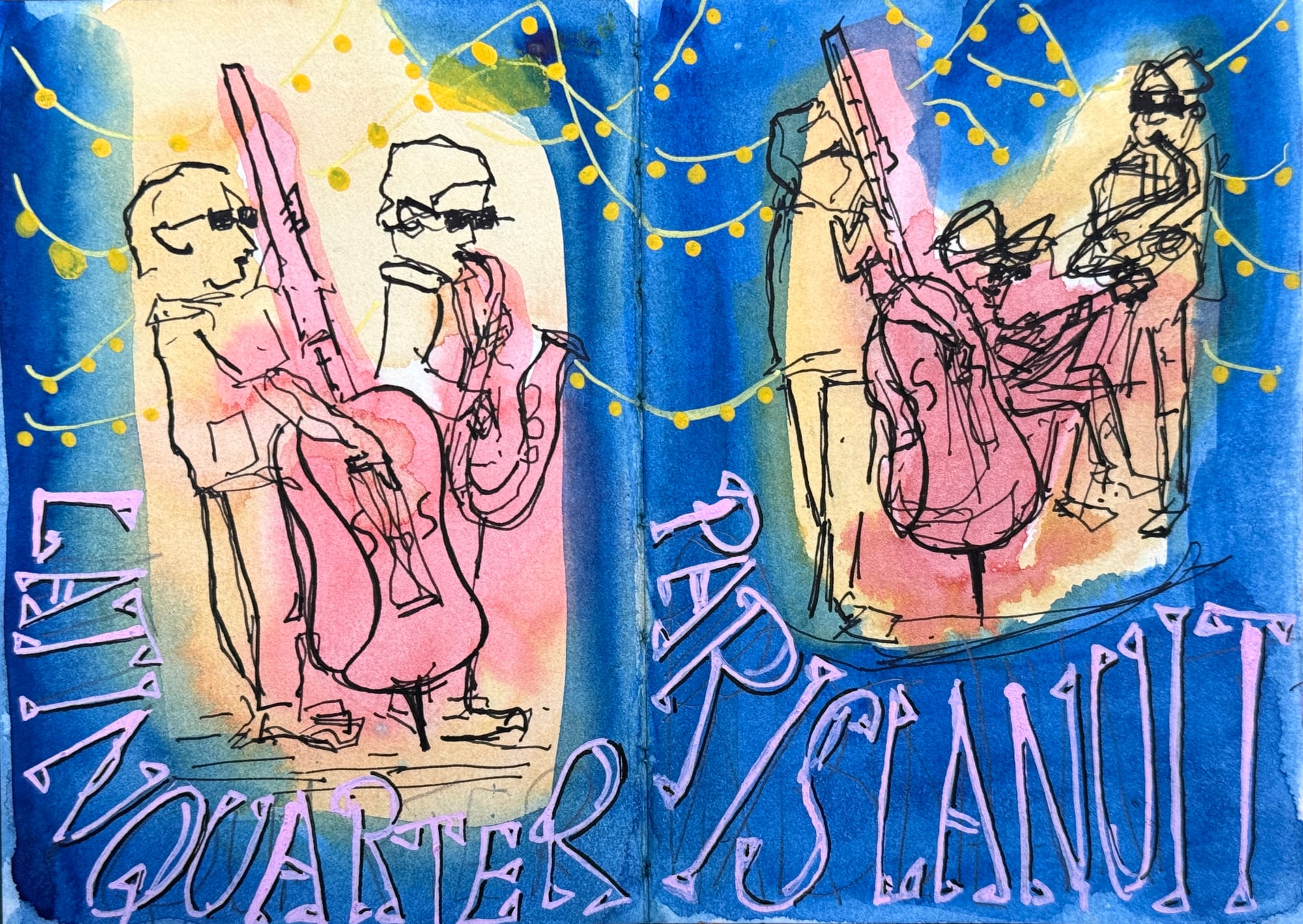
Coming Next Week : The Dénouement - Paris Unframed – Streetlife, Art & the Unexpected
Experiencing Hockney * Stepping into Gehry’s sculptural dream * Soaking in the everyday poetry of café life in the Latin Quarter.

✨ Also Coming Next Week Exclusively for Members - A Video Walkthrough of Gehry's Masterpiece.
Plus an immersive 360 VR of the Cluny's Roman Frigidarium
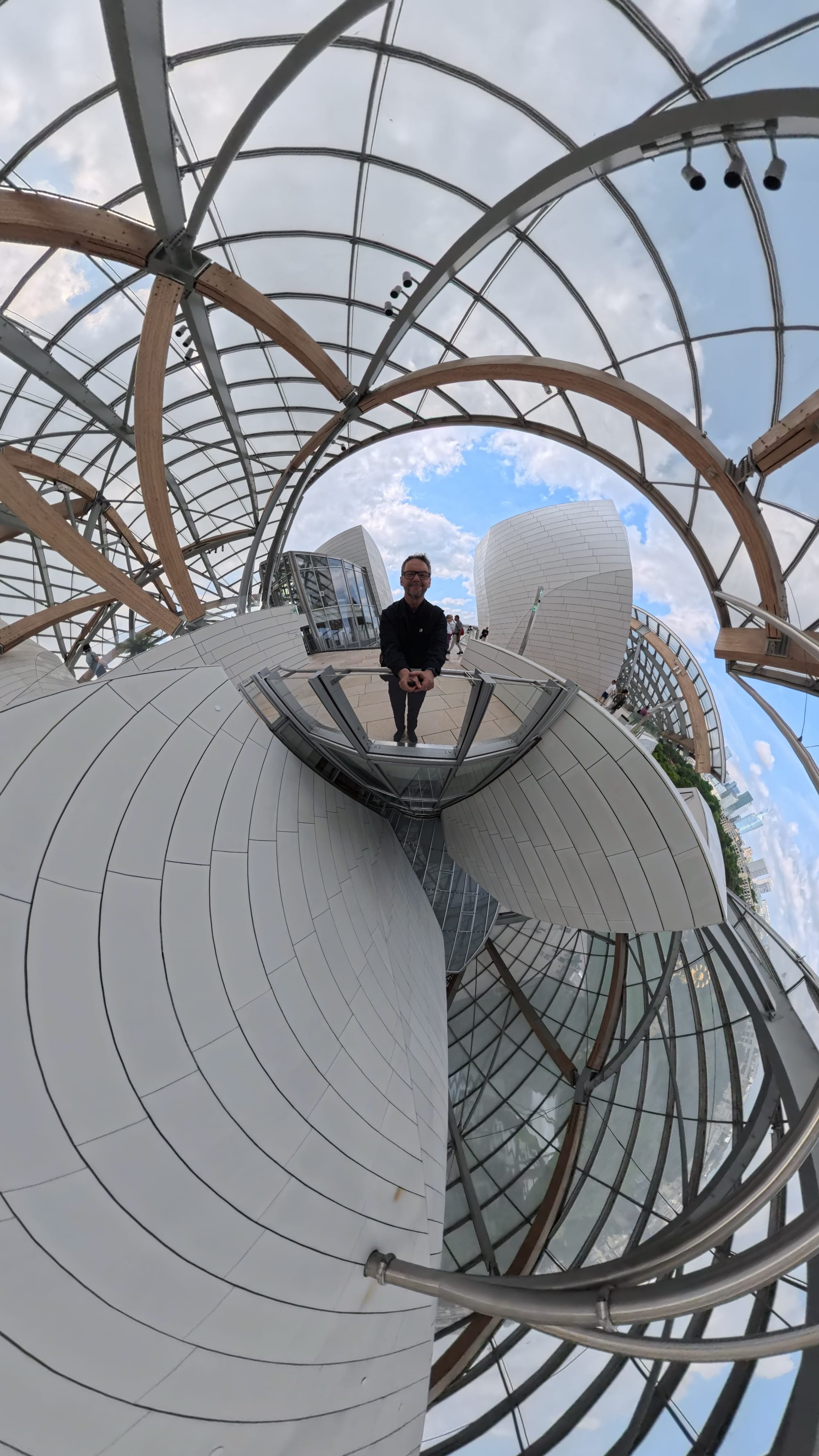
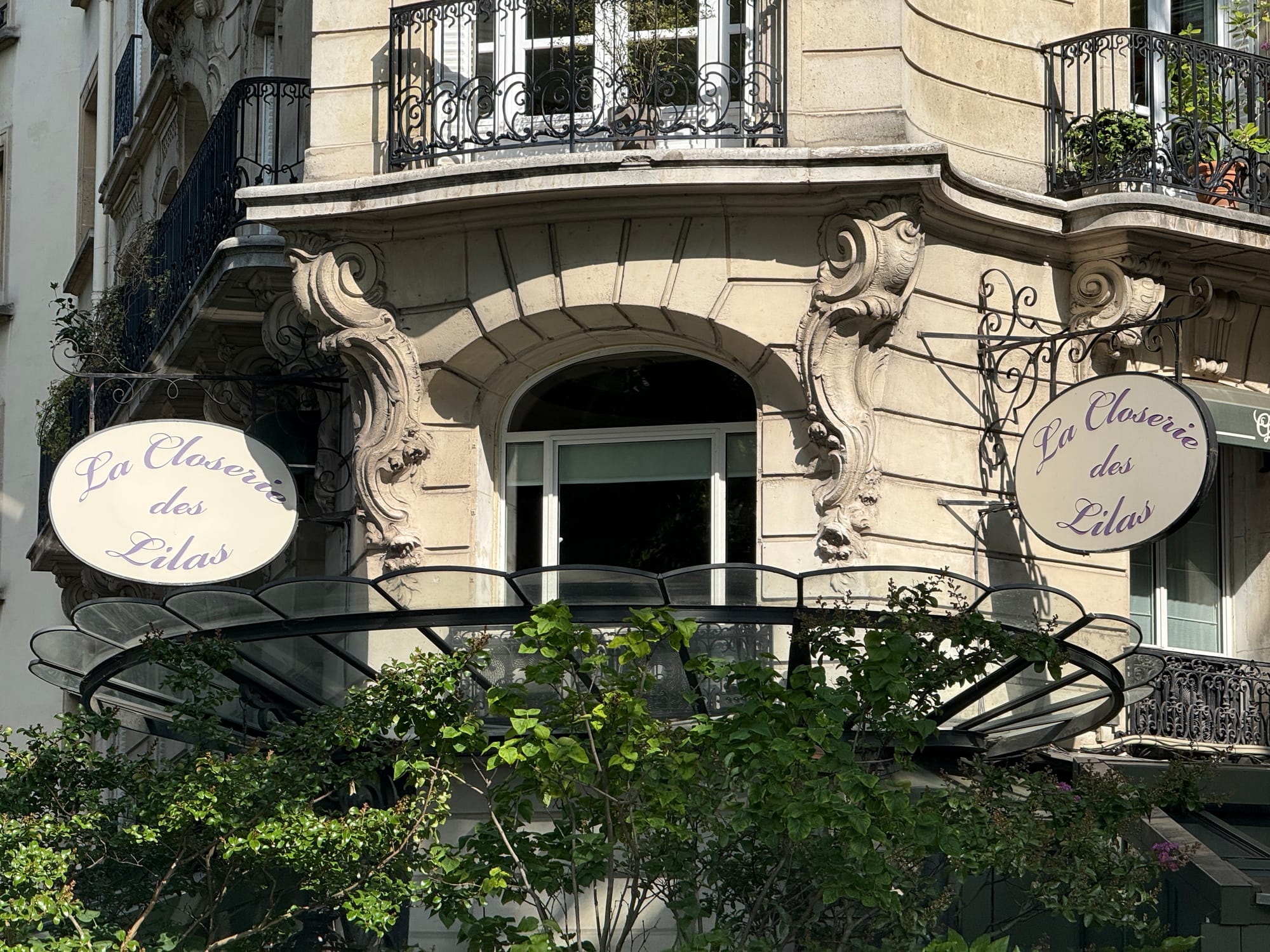
Thank You!
Photographs and words by Andy Marshall (unless otherwise stated). Most photographs are taken with Iphone 16 Pro and DJI Mini 3 Pro.
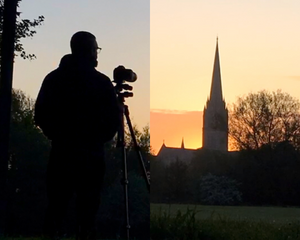
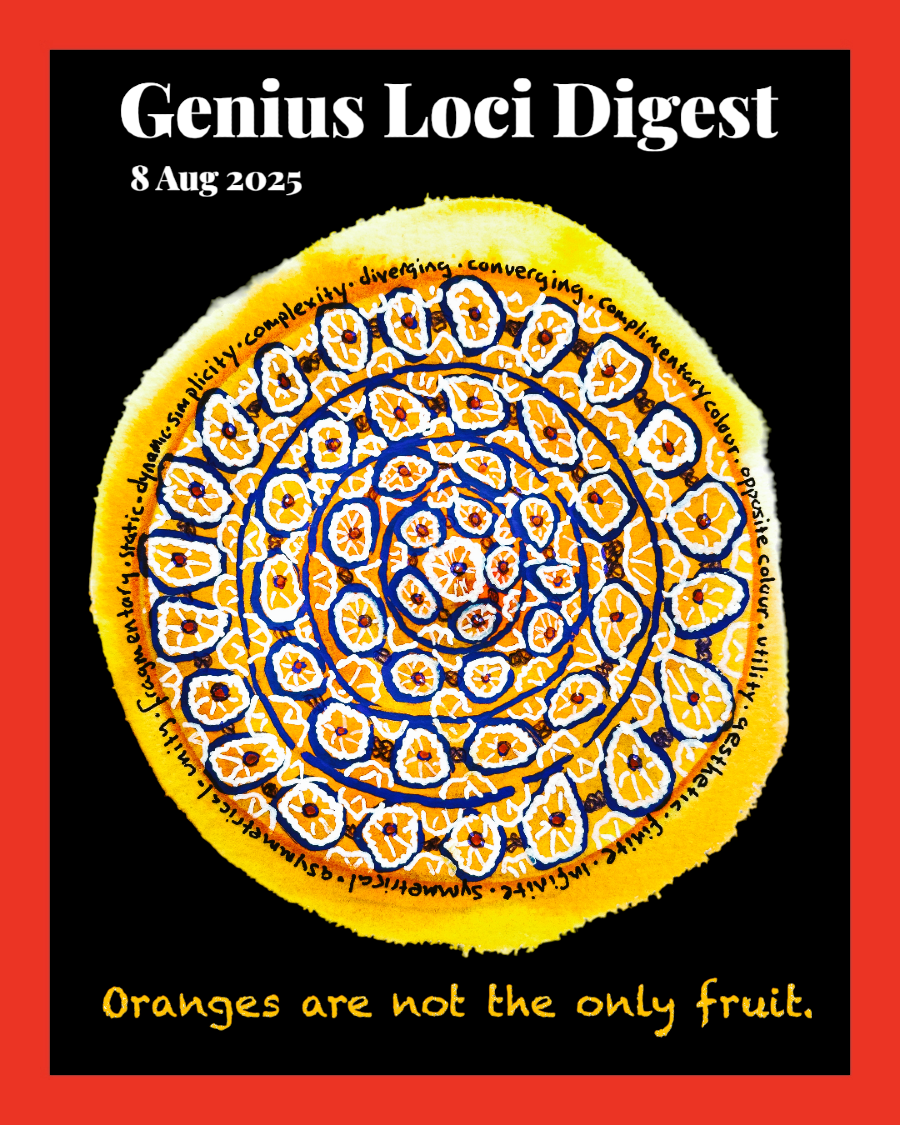


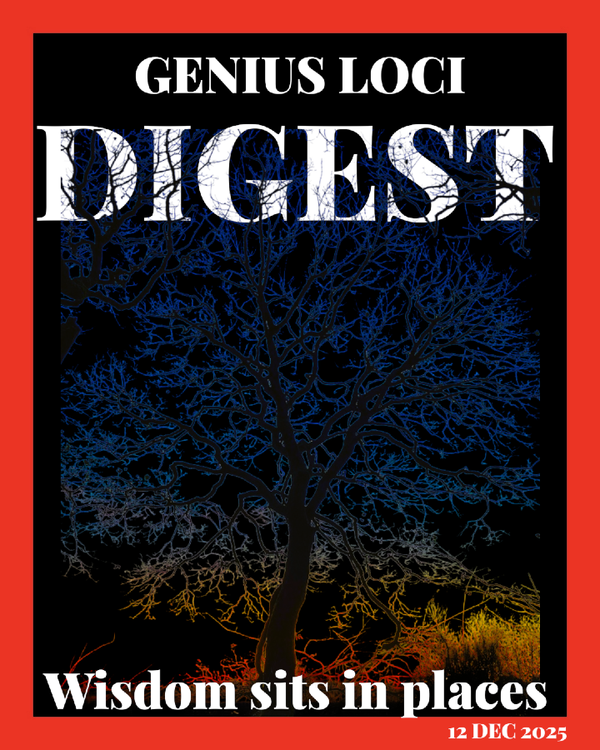
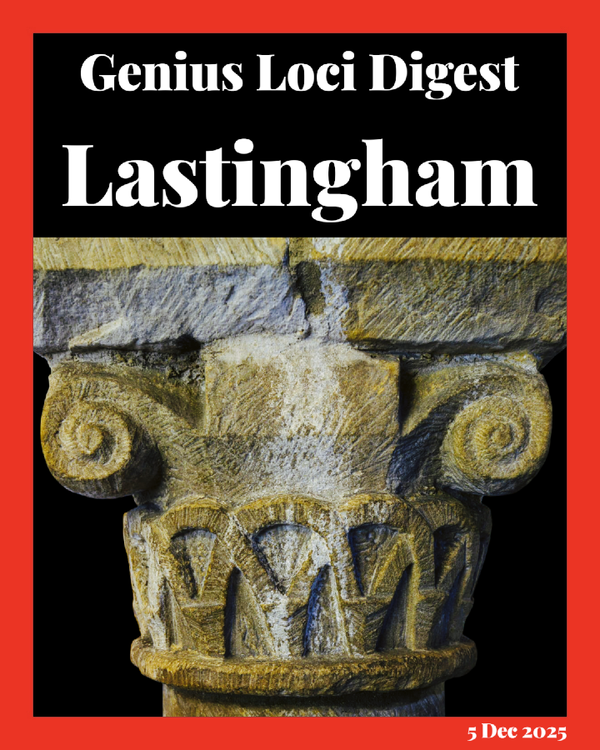
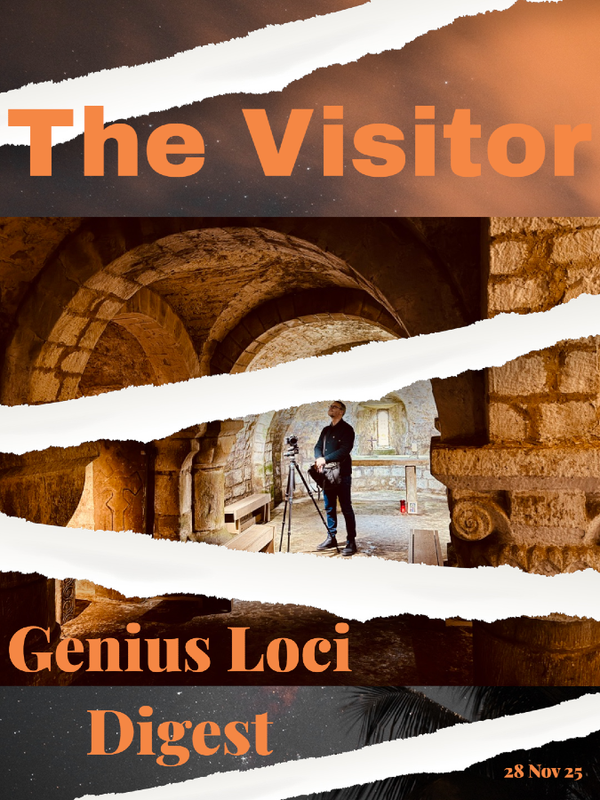

Member discussion